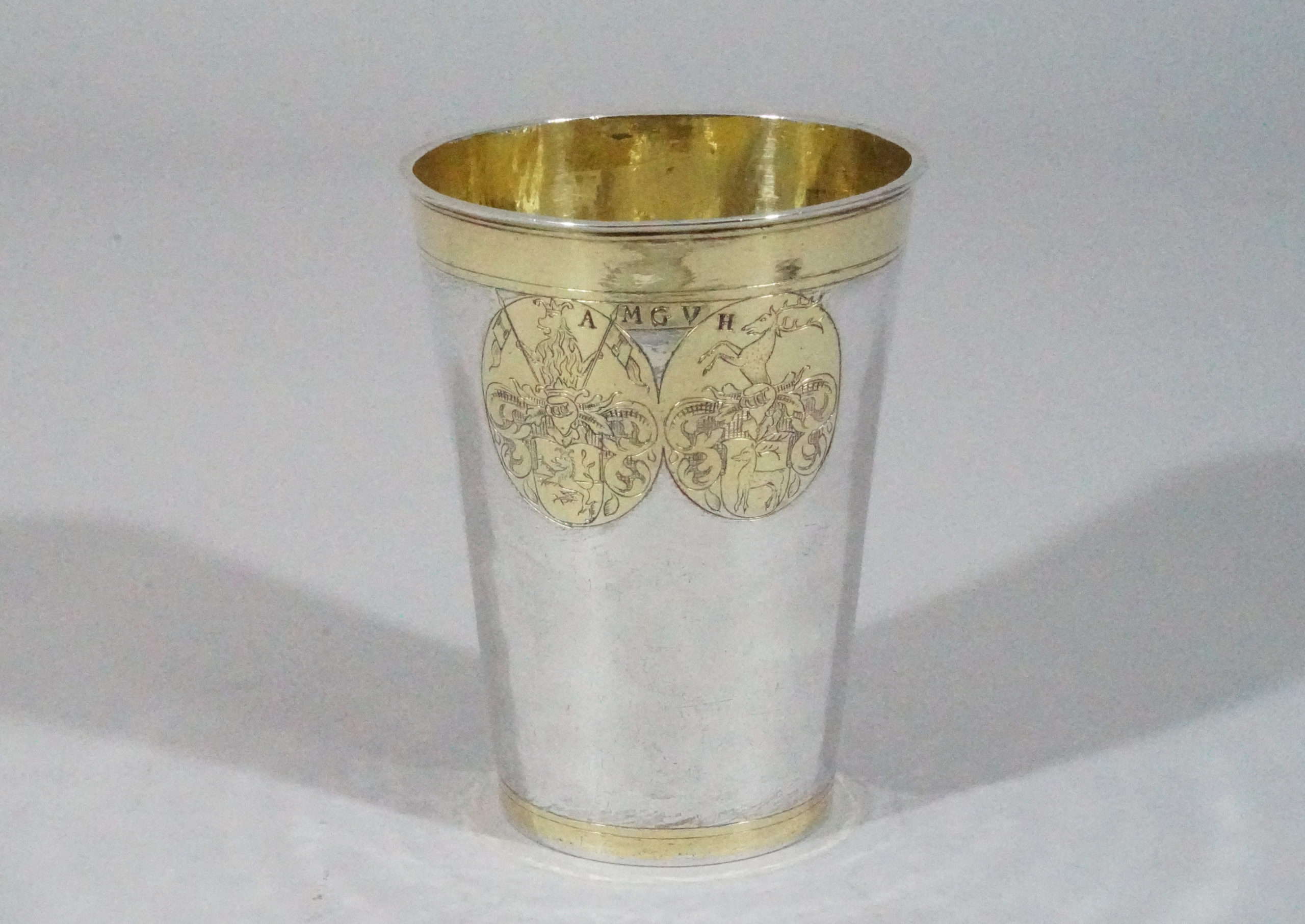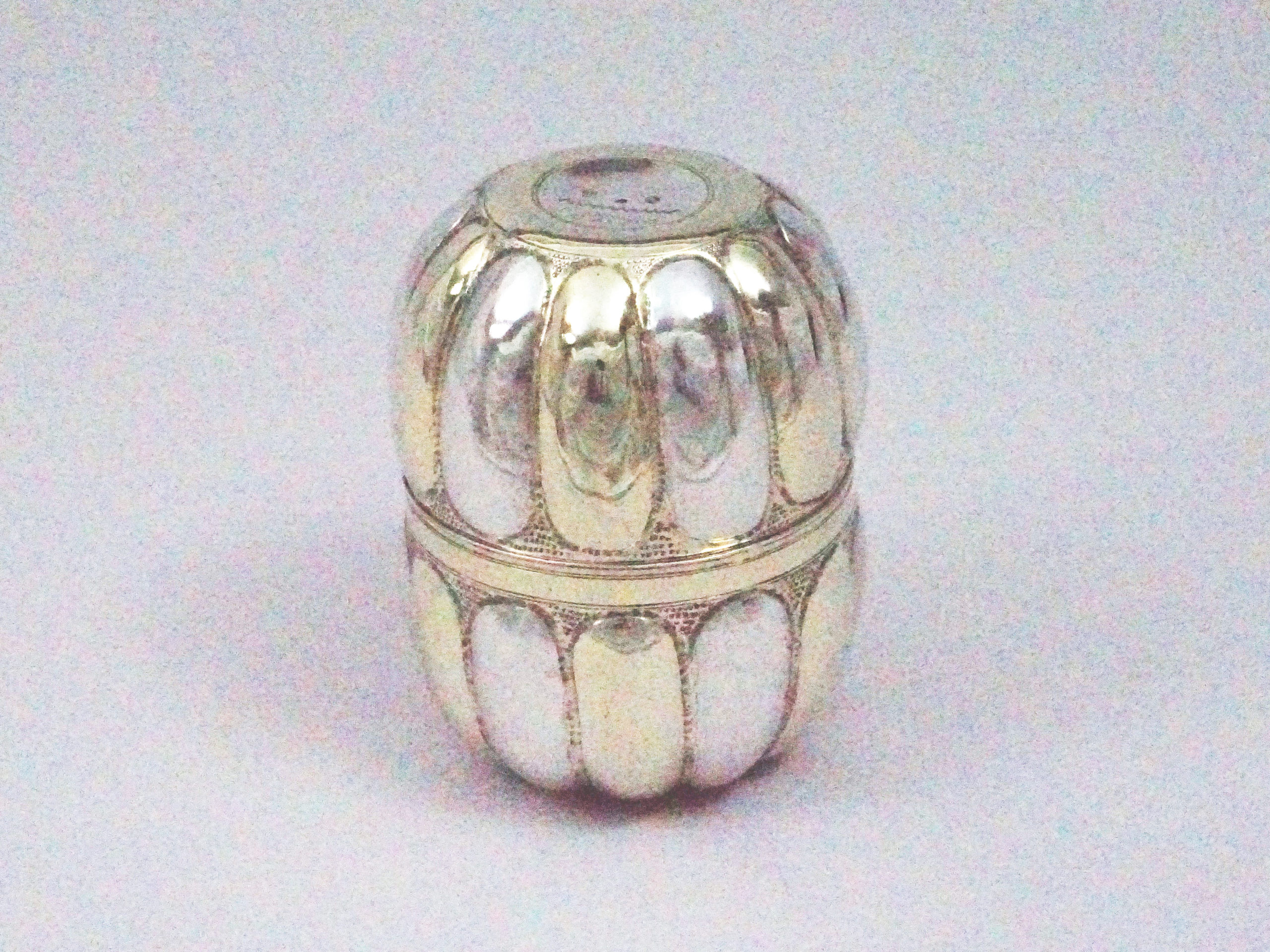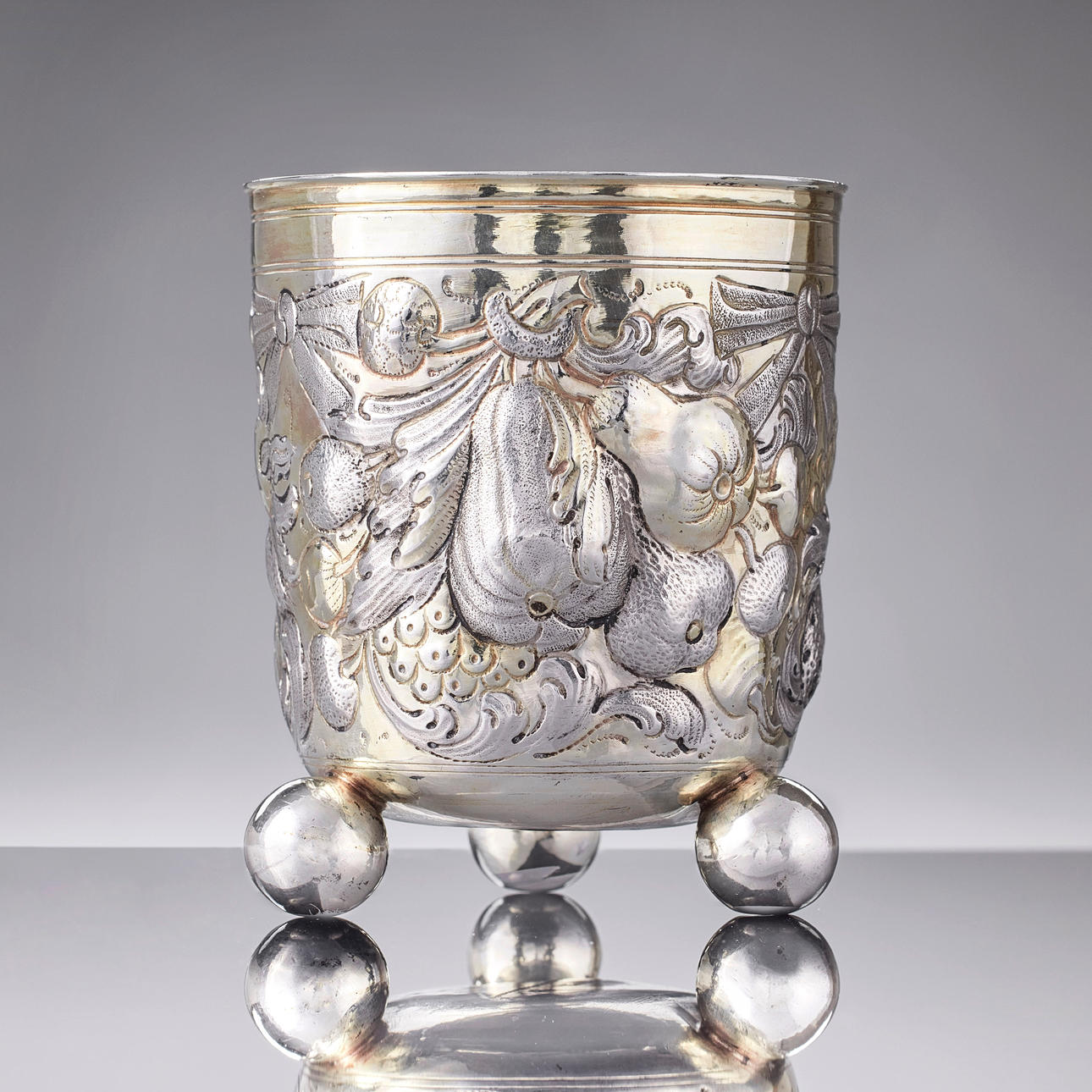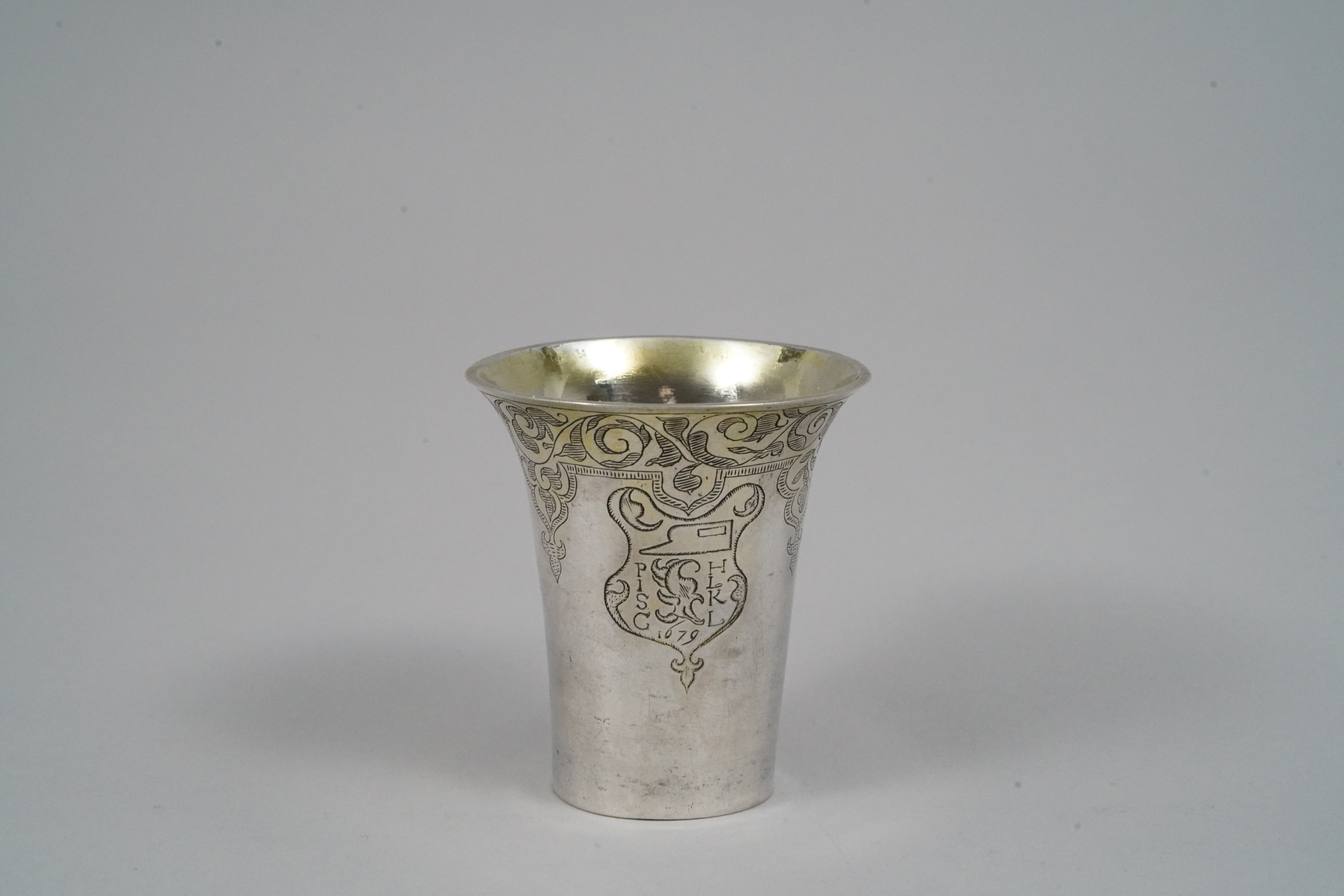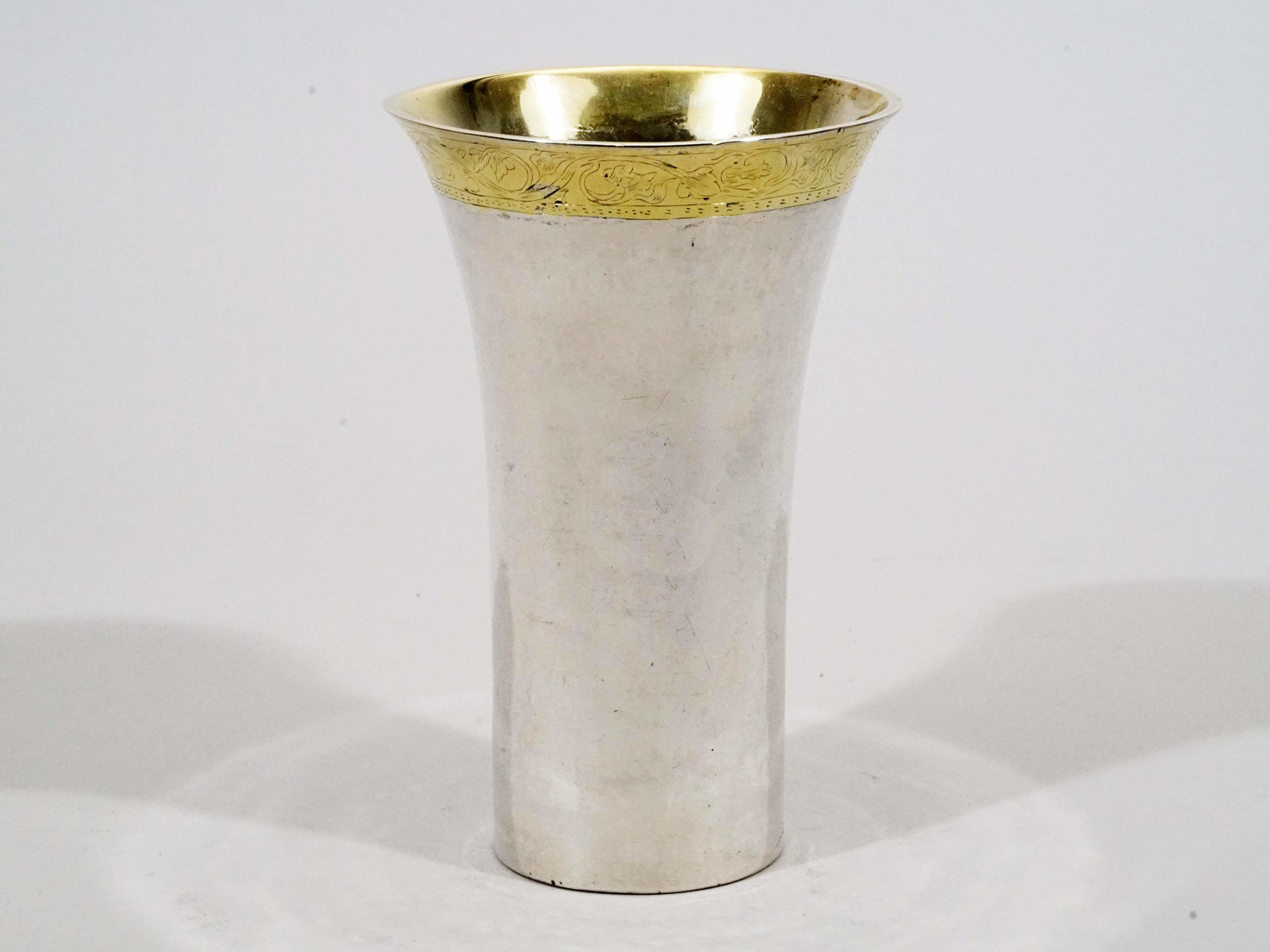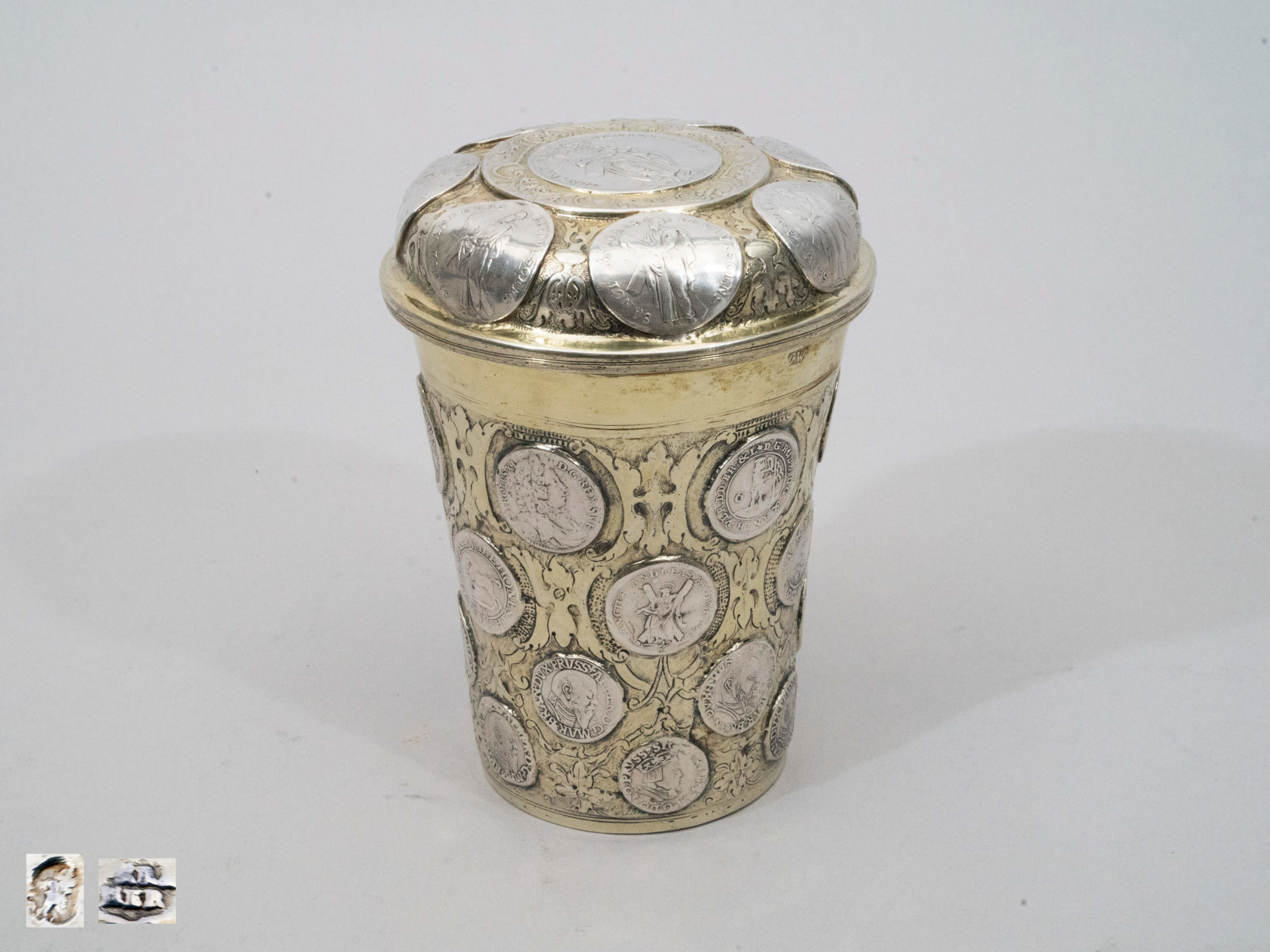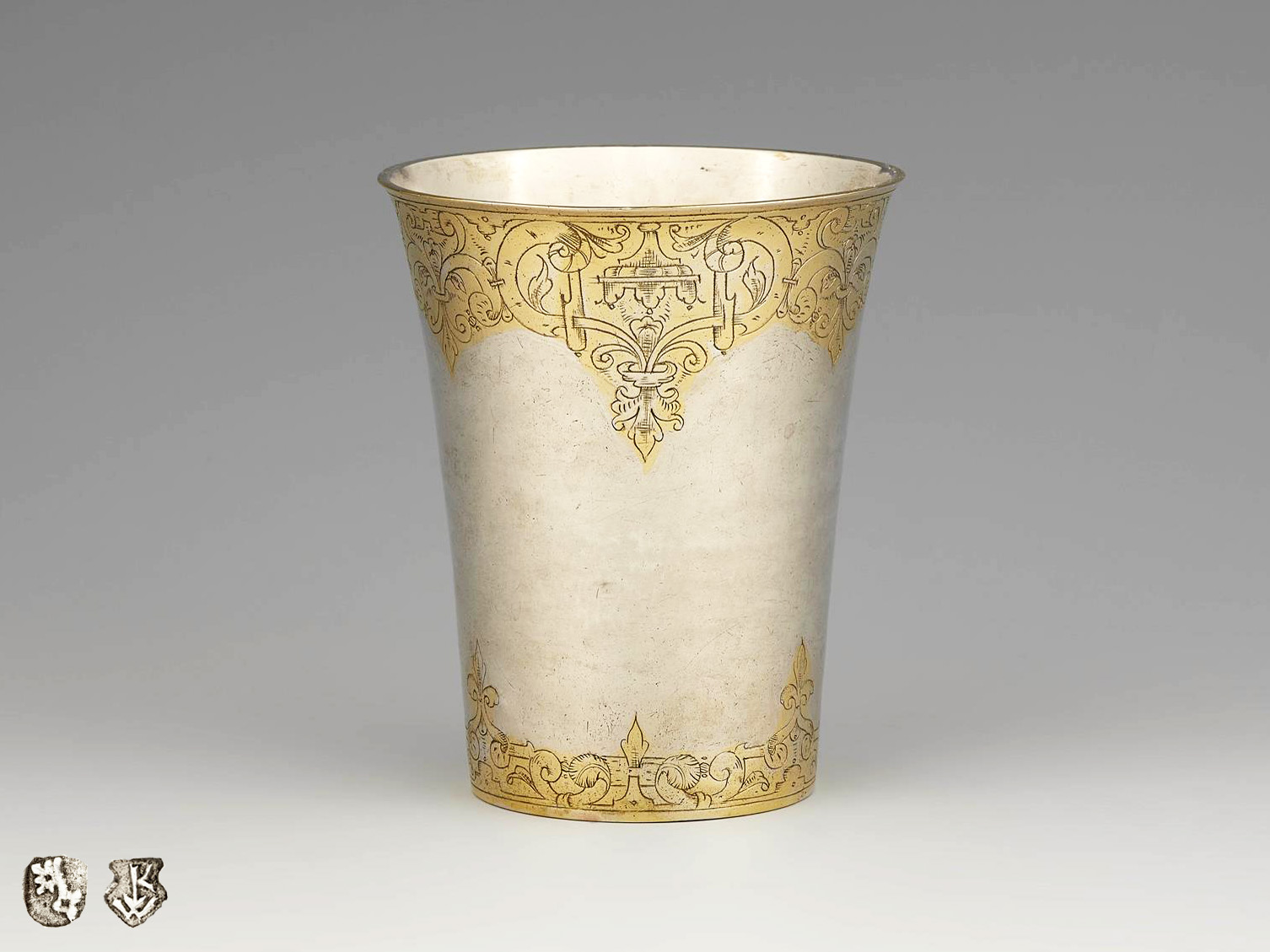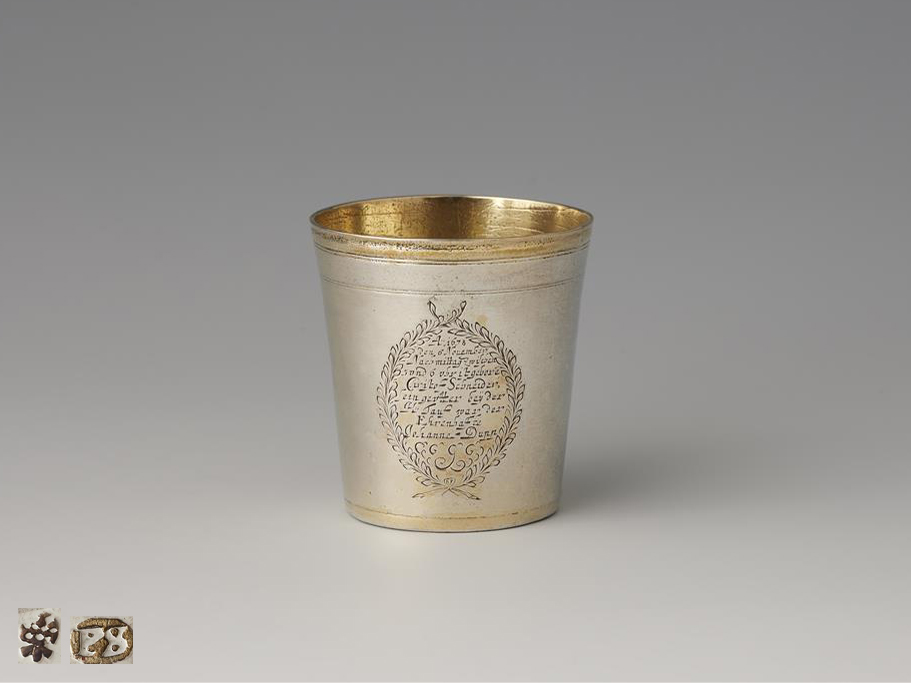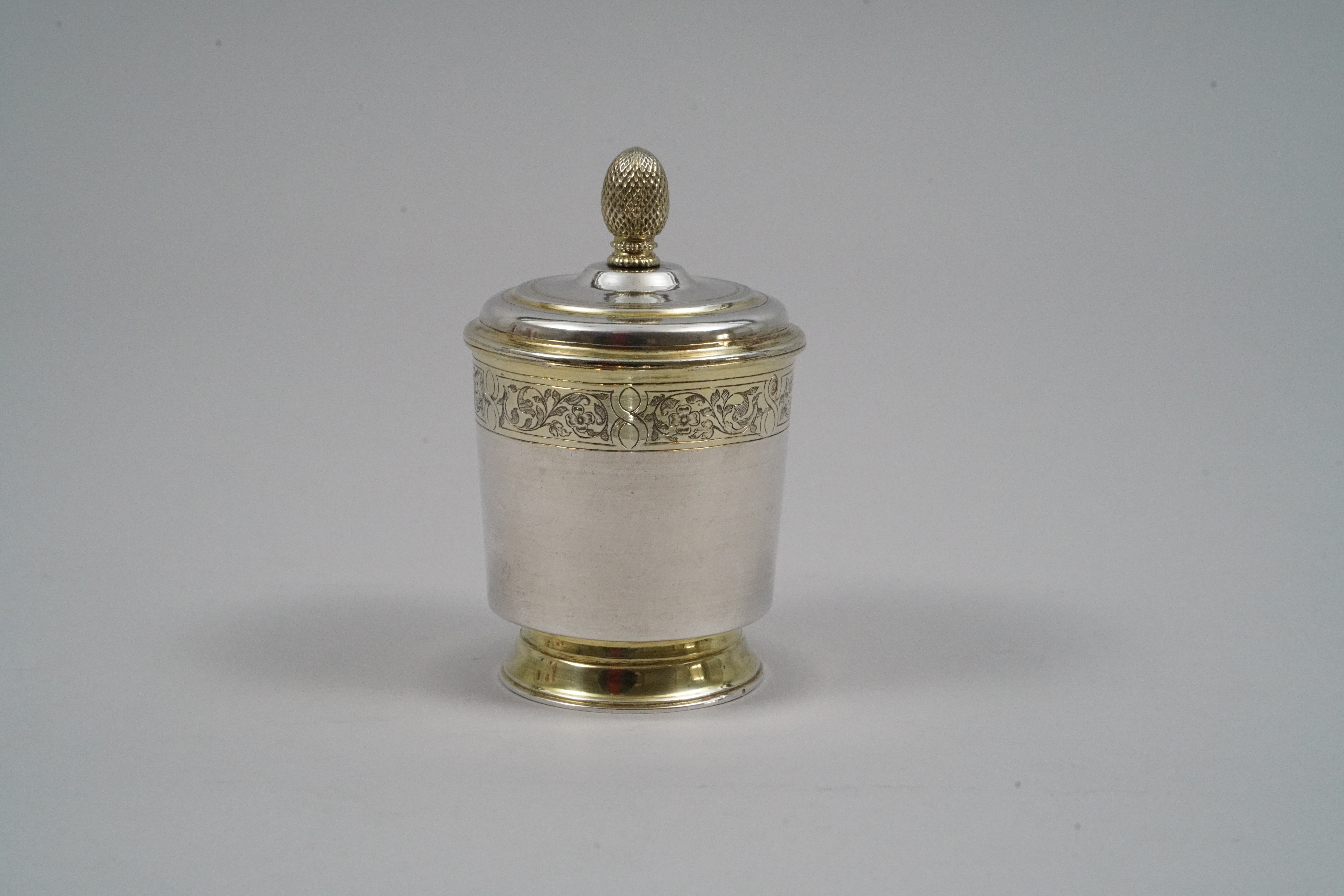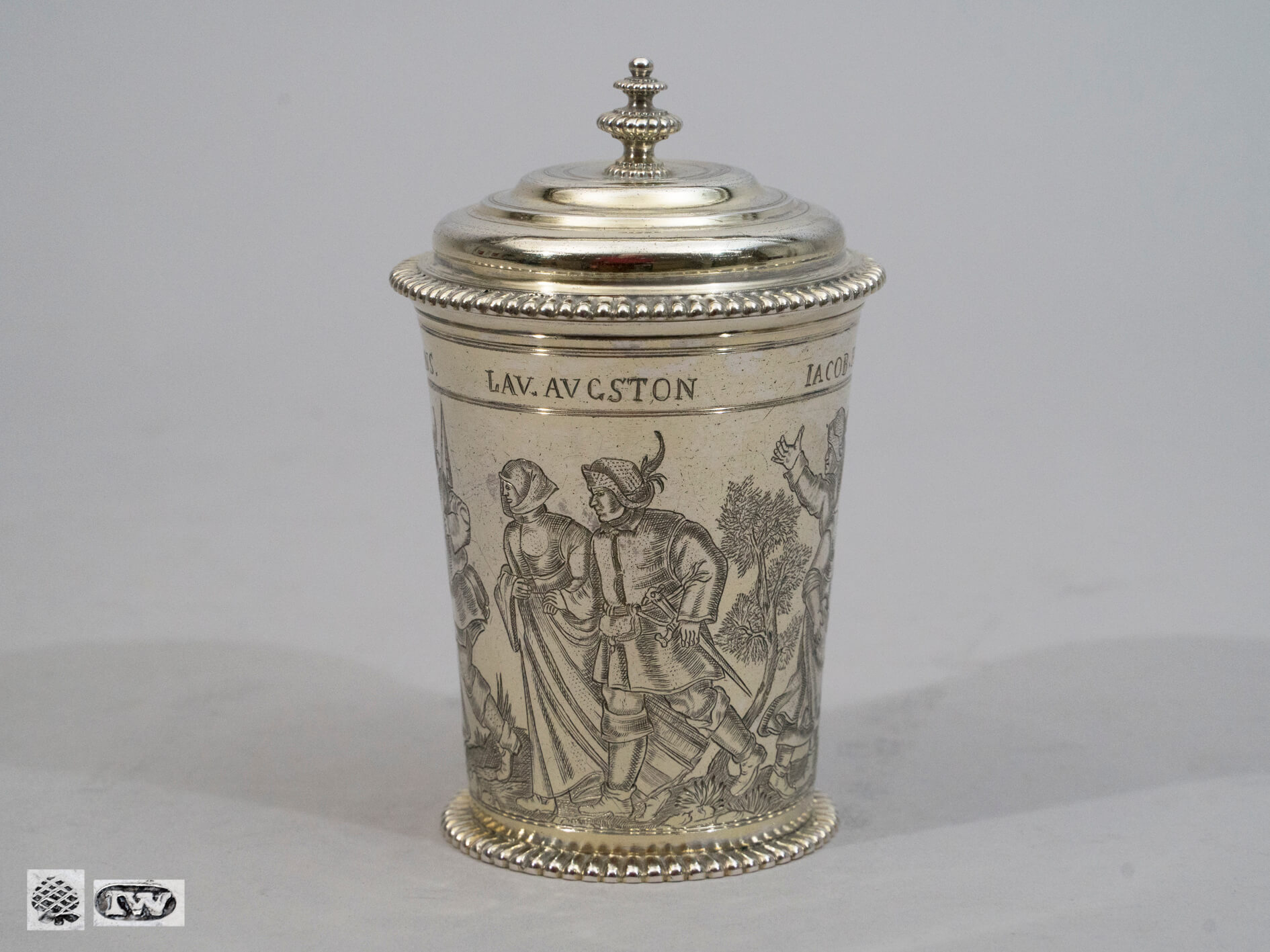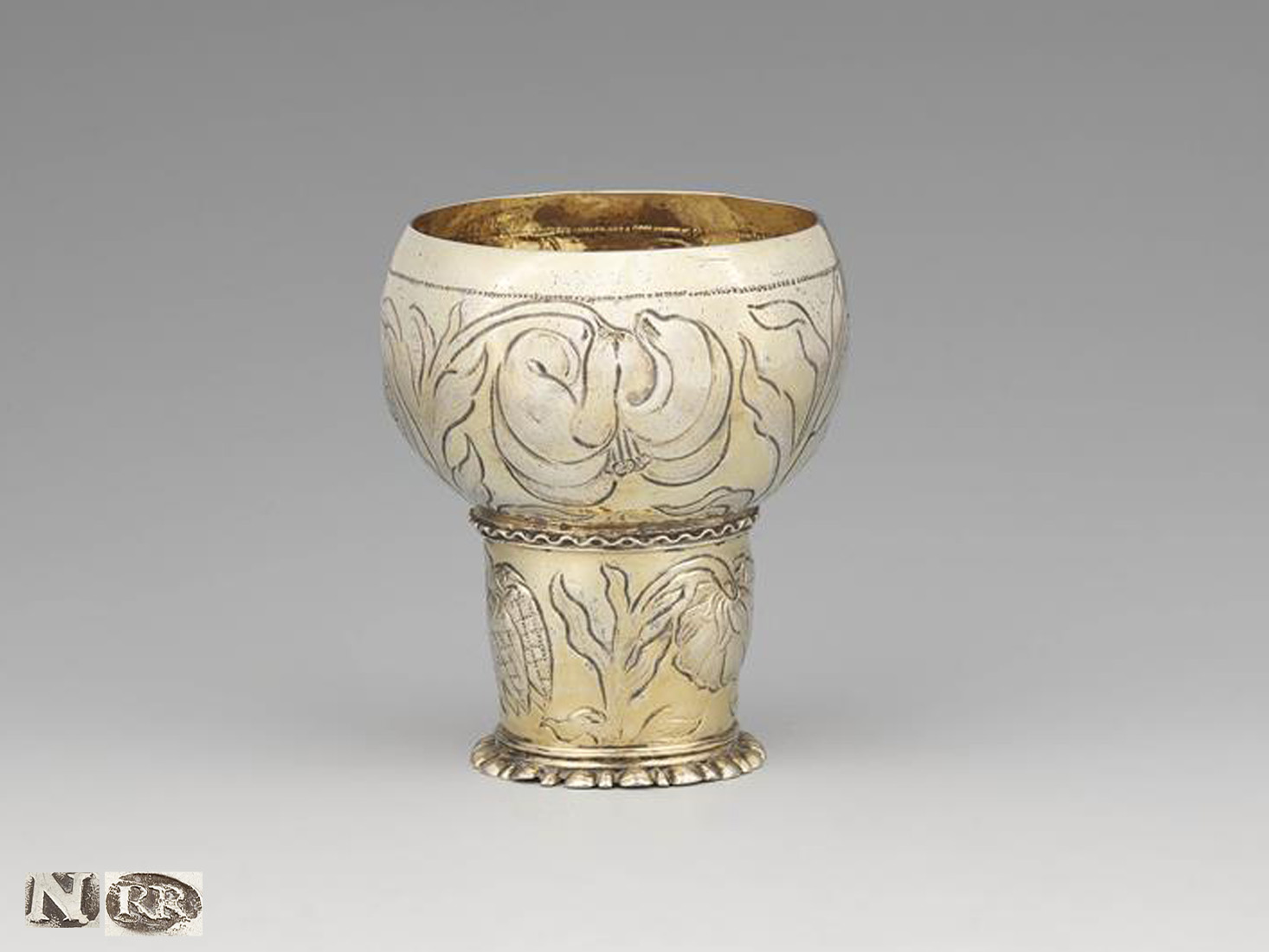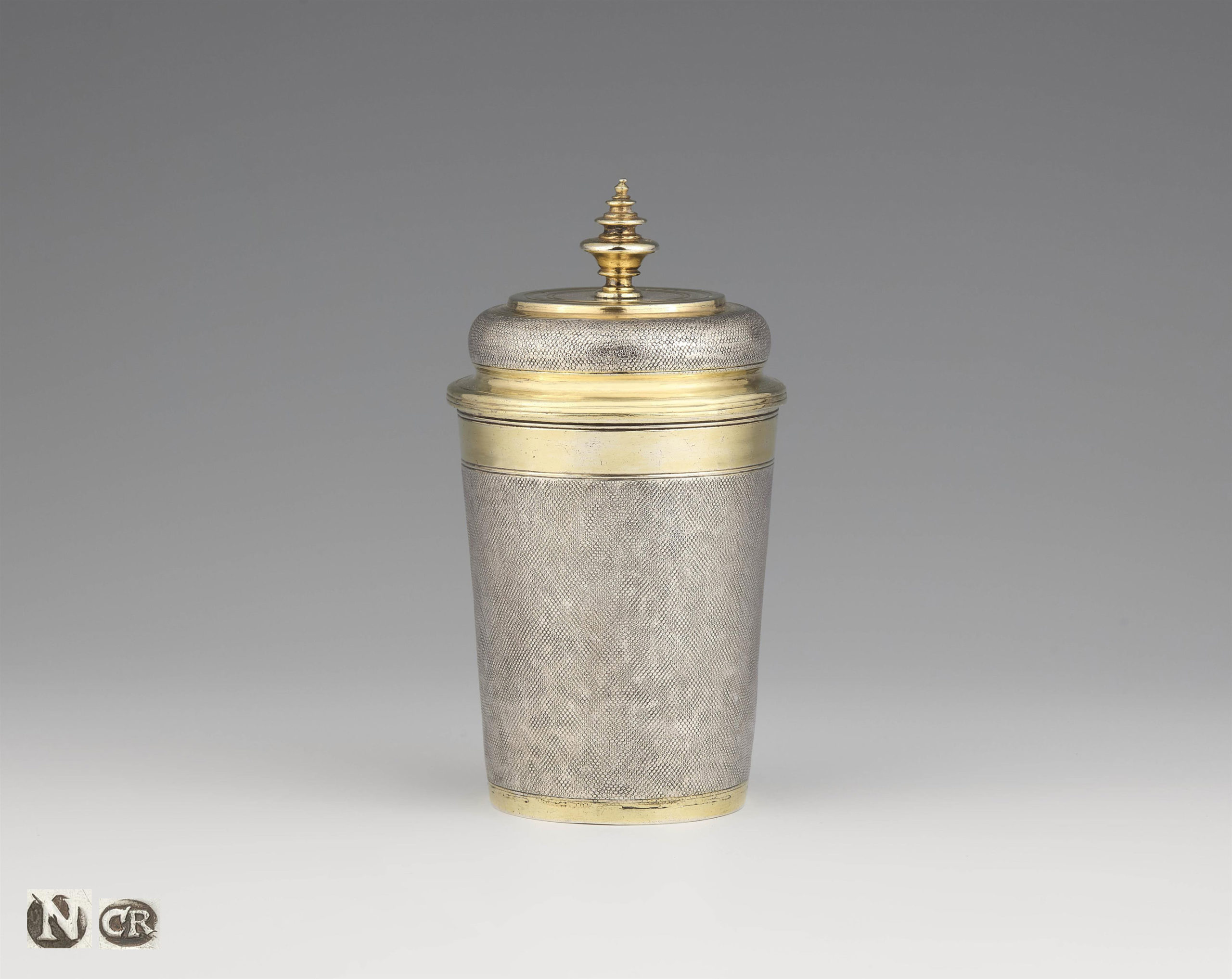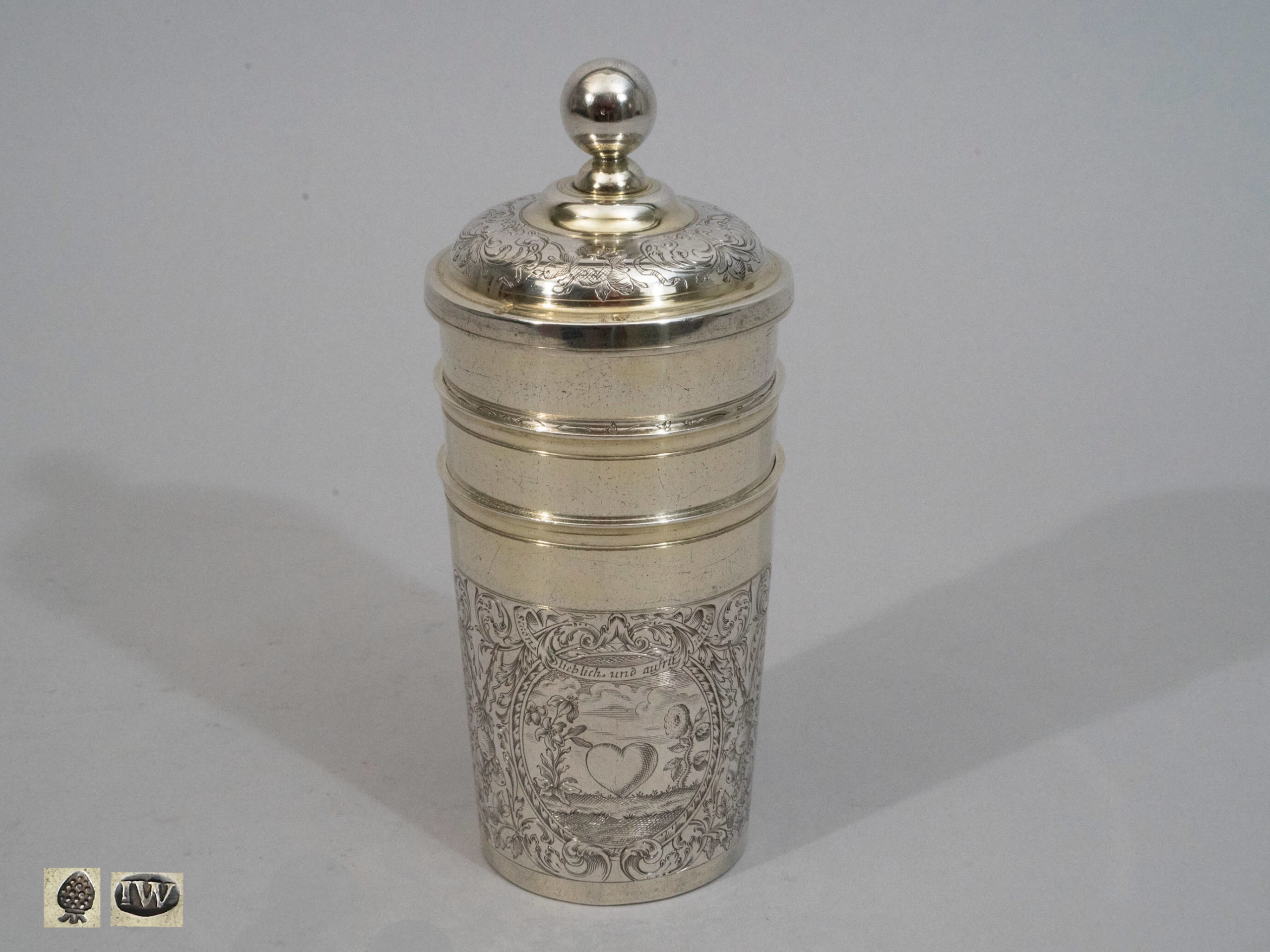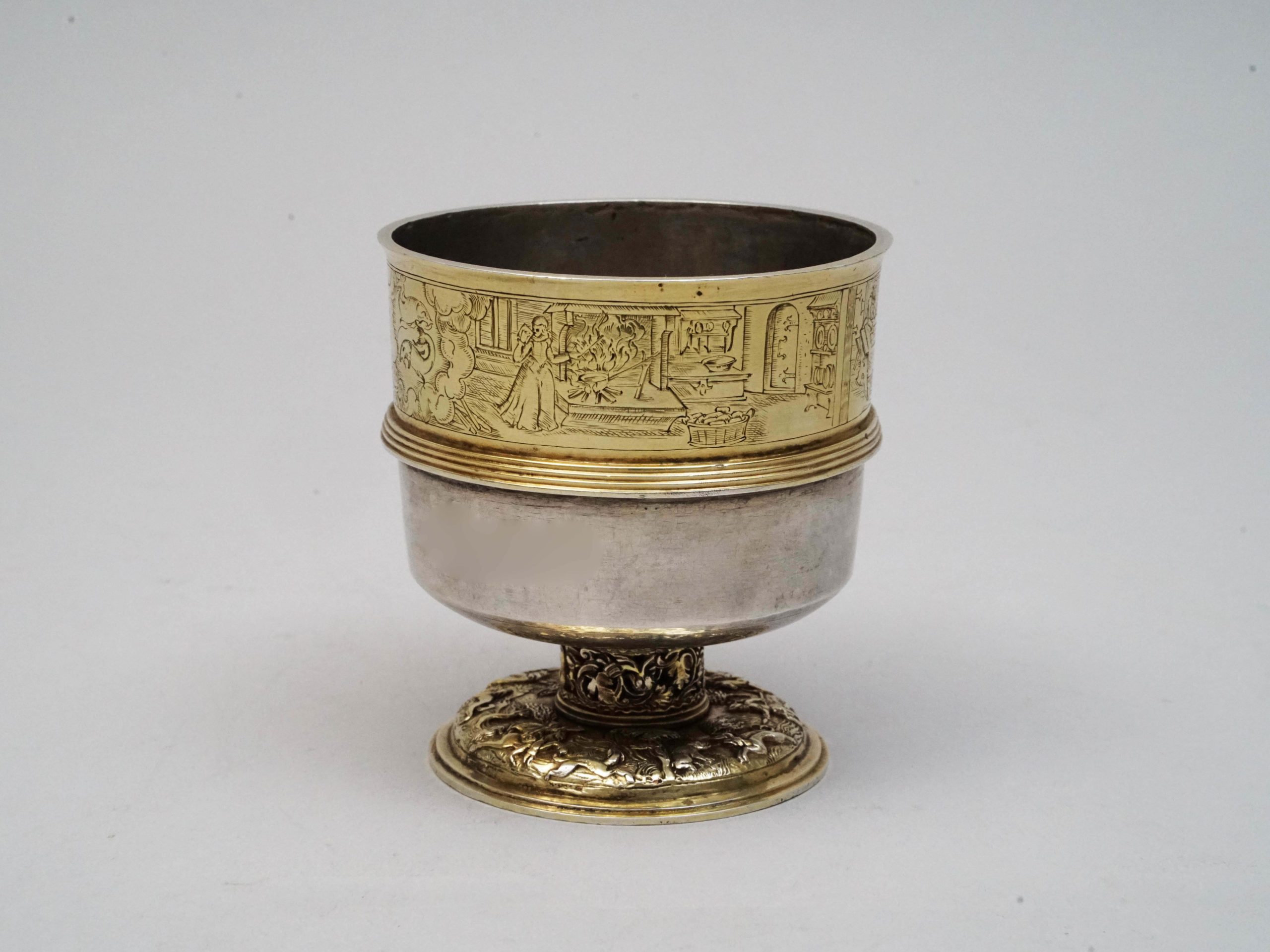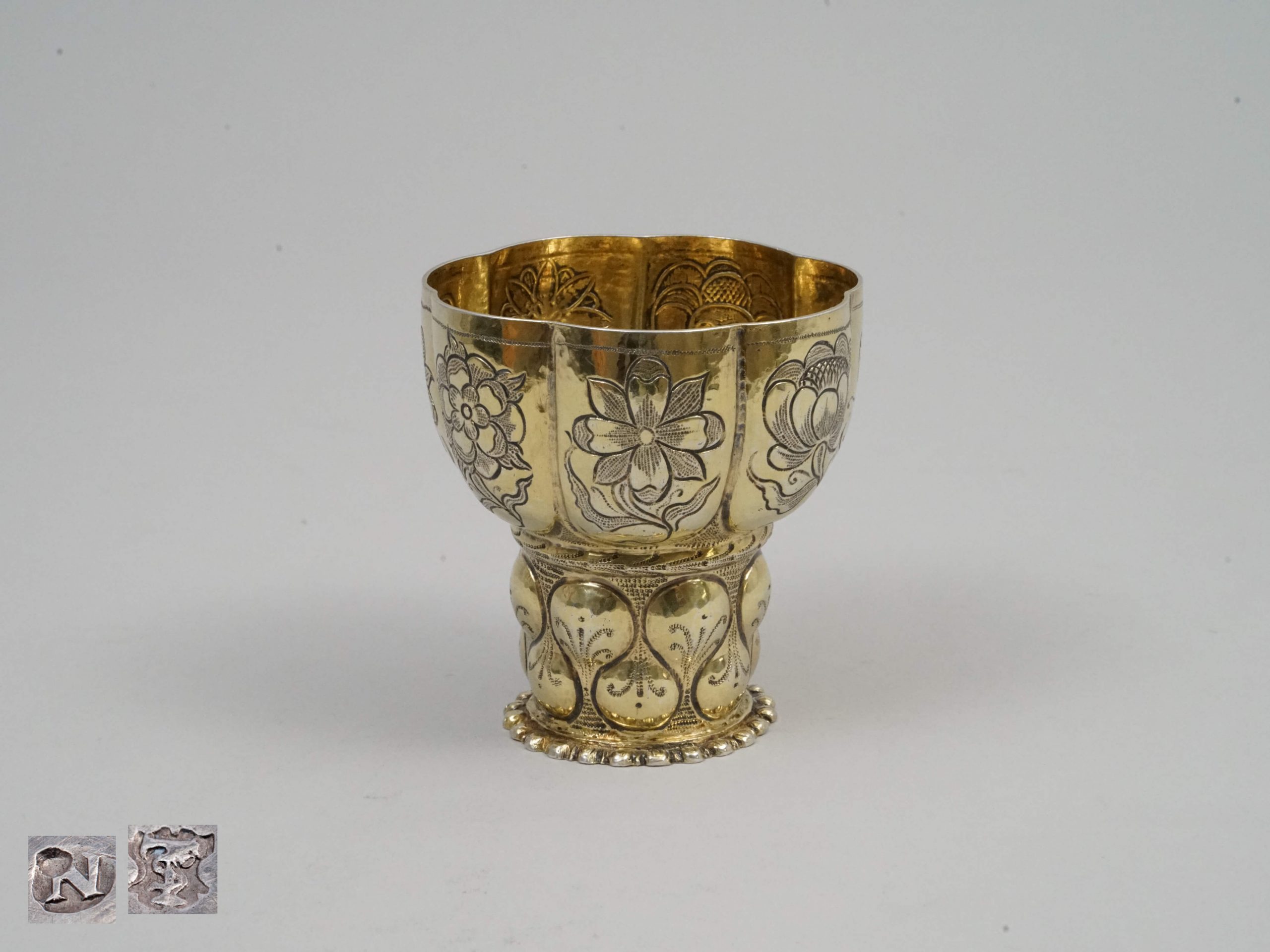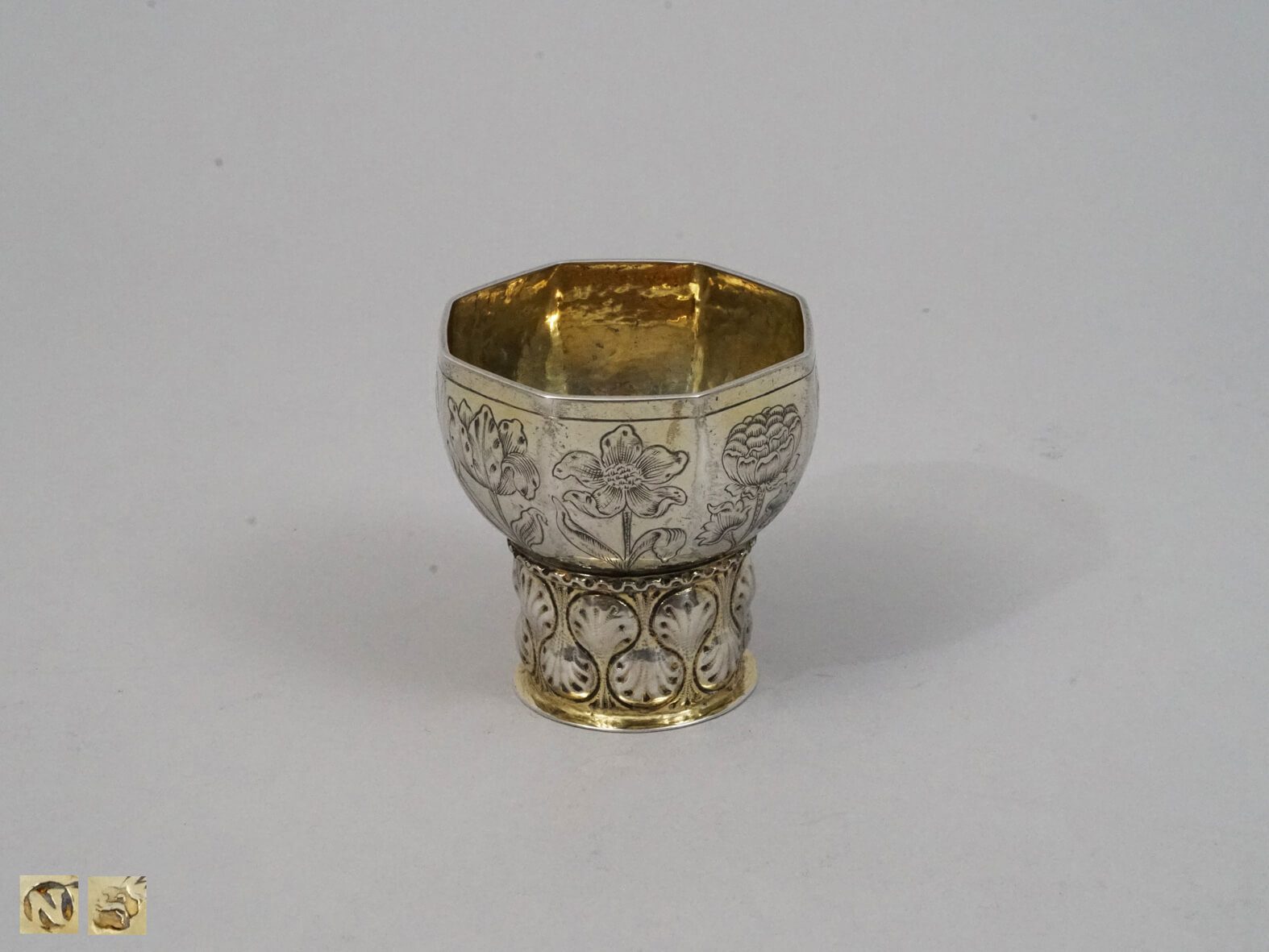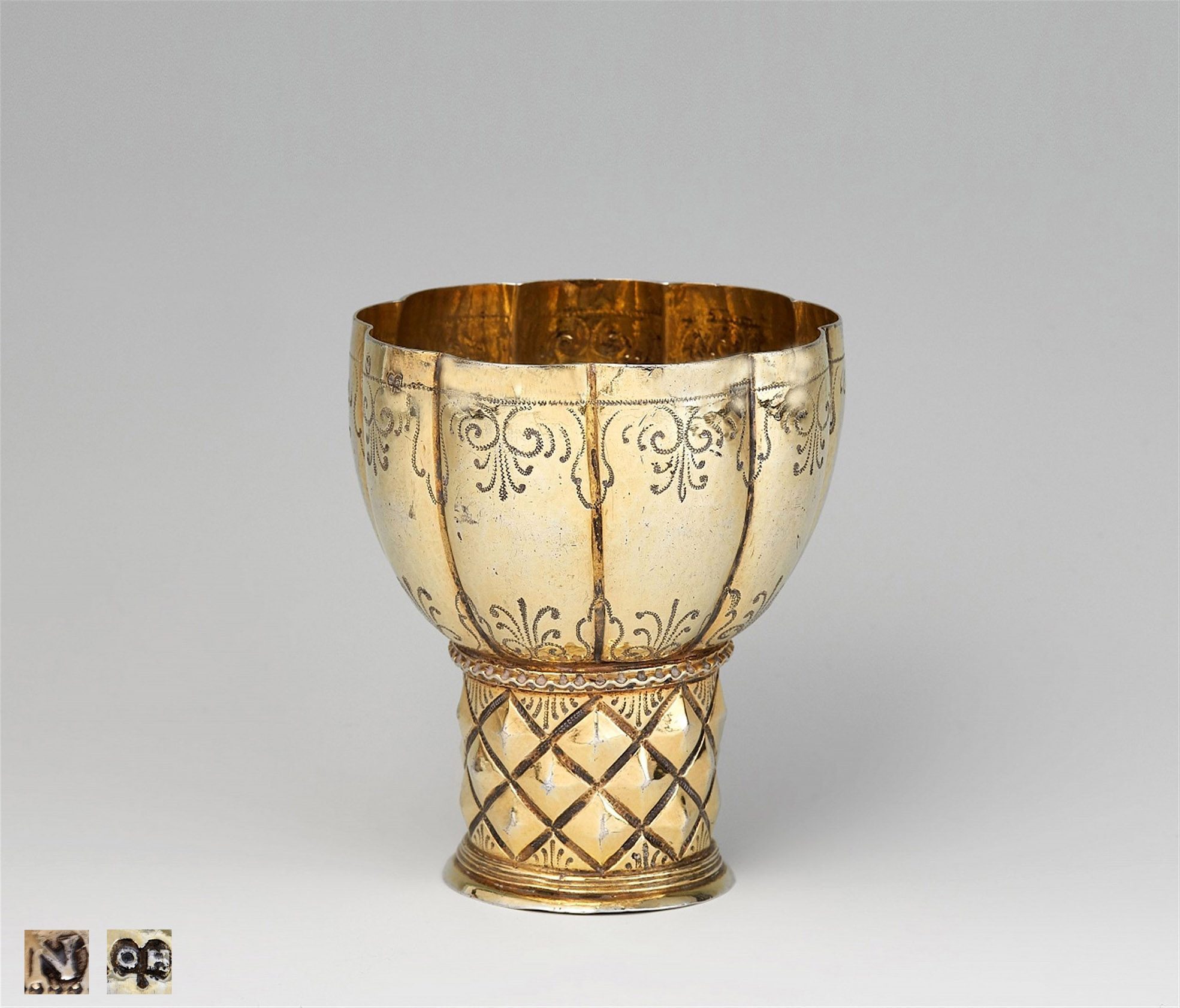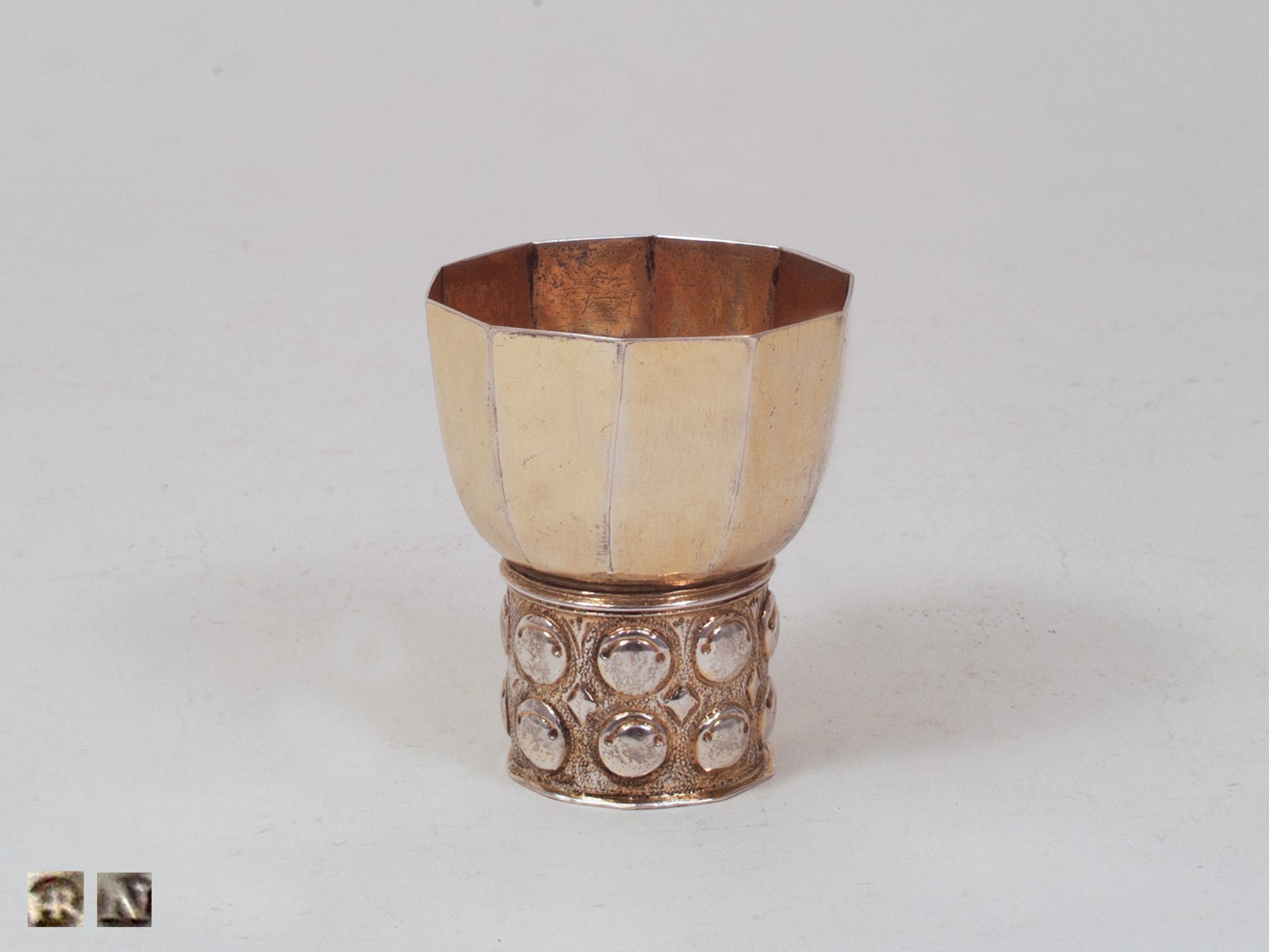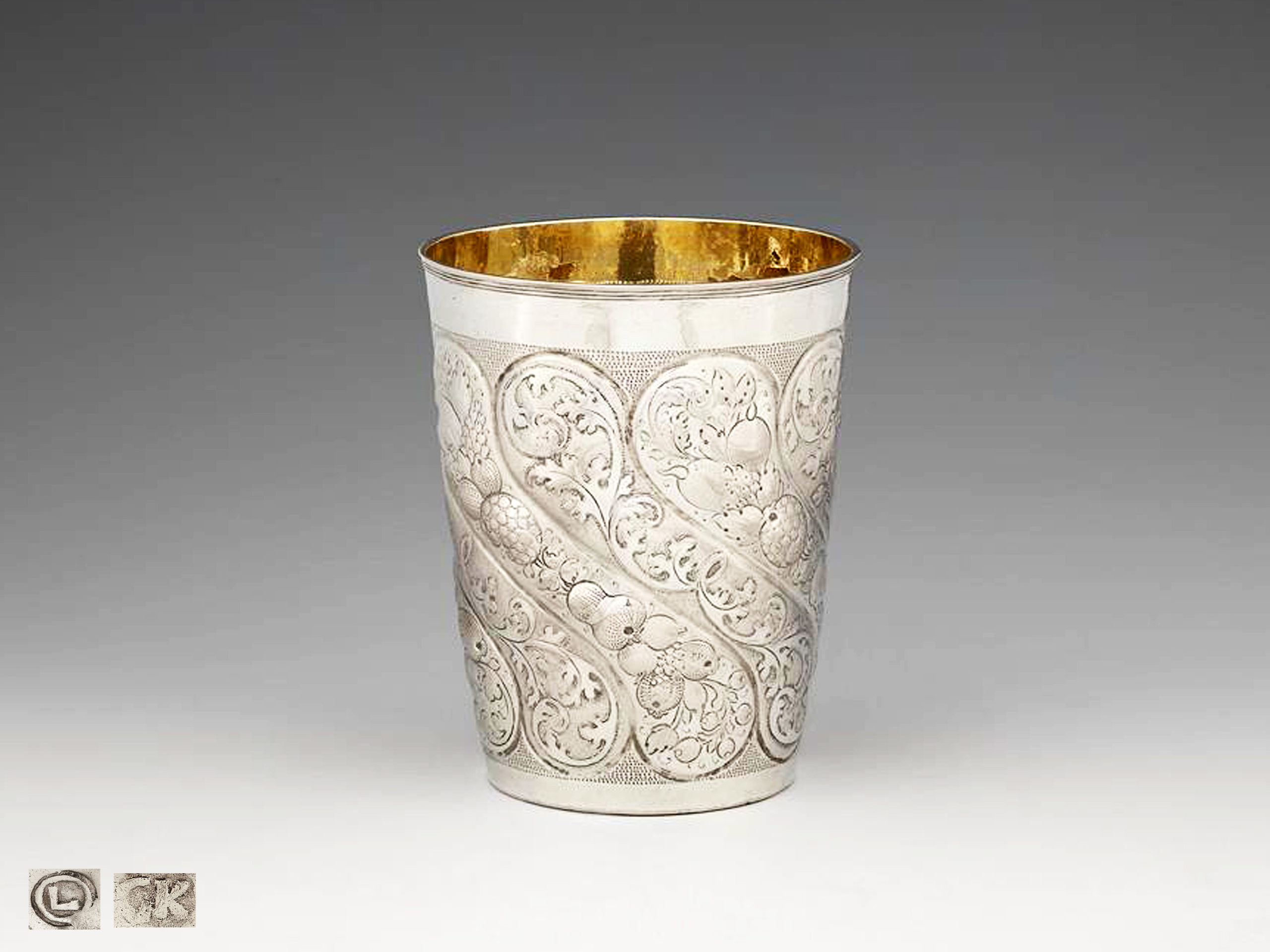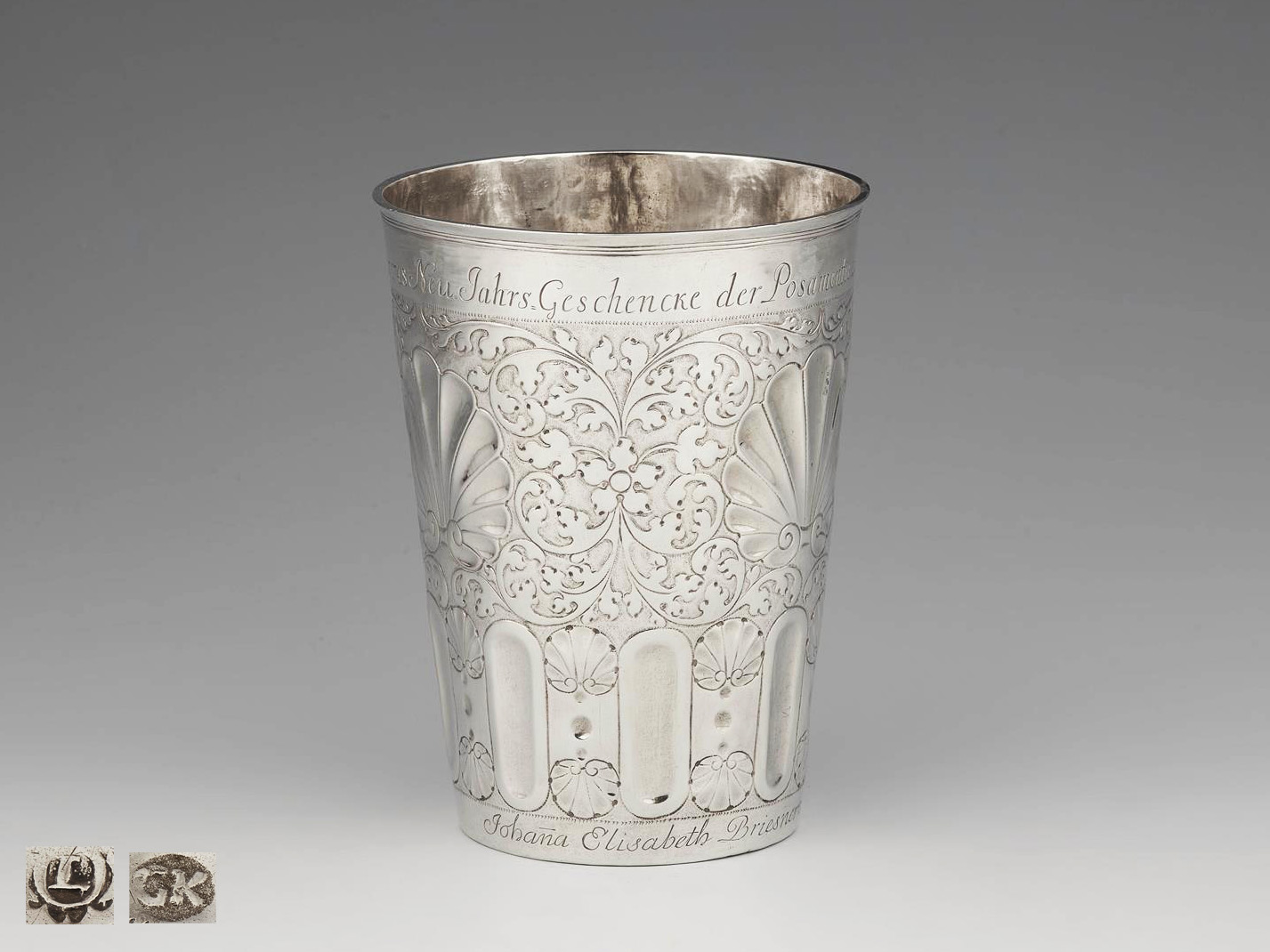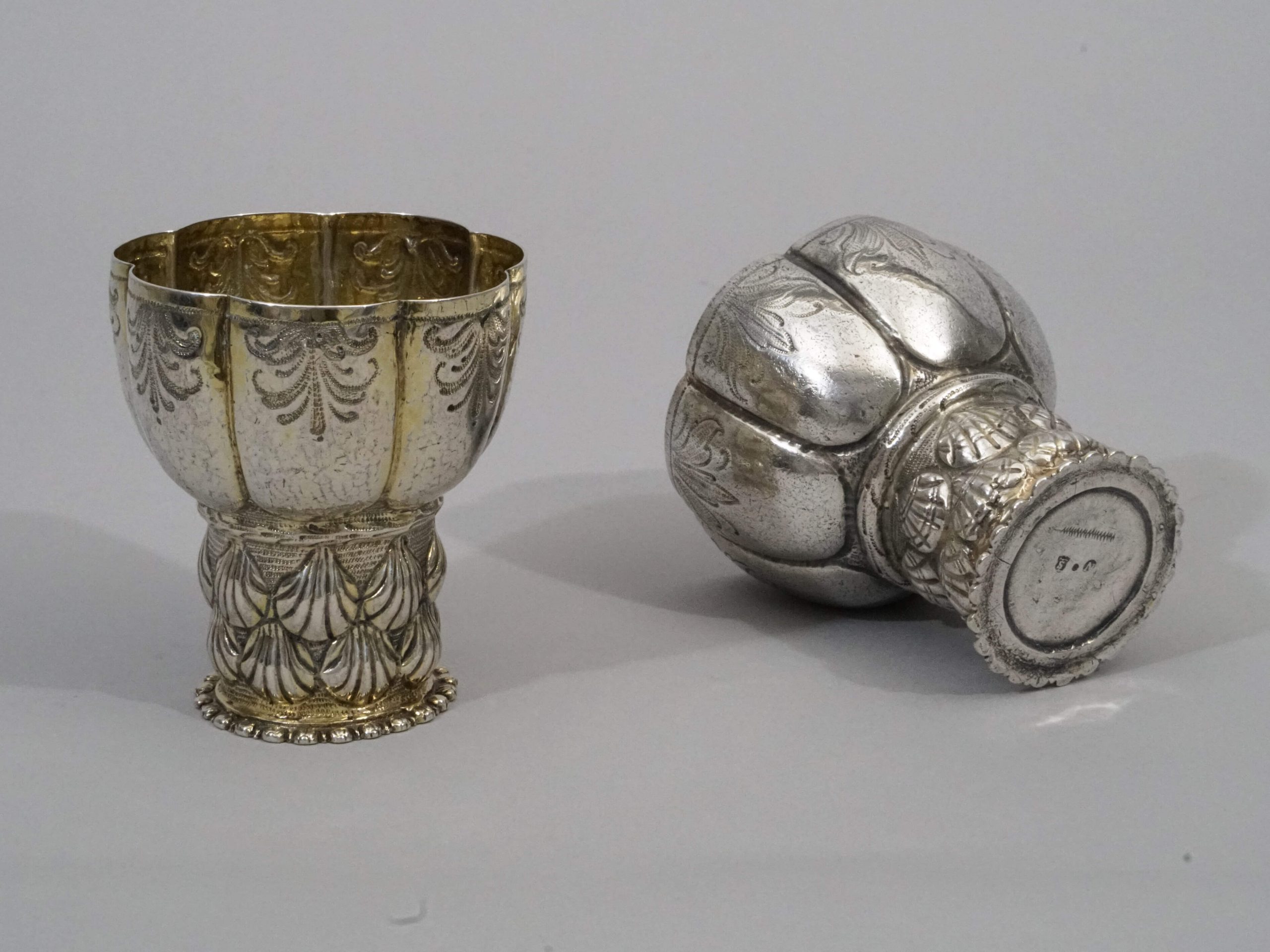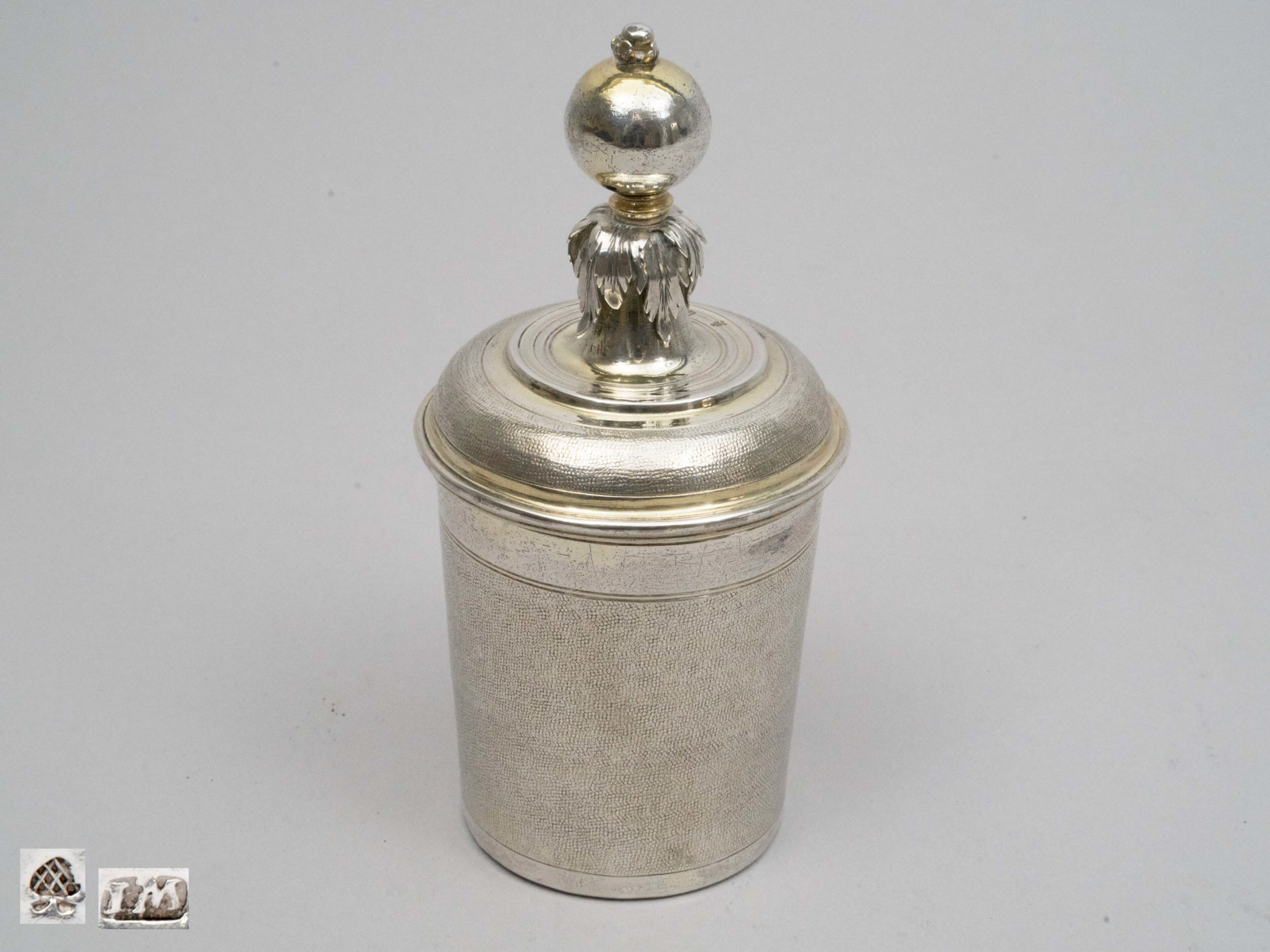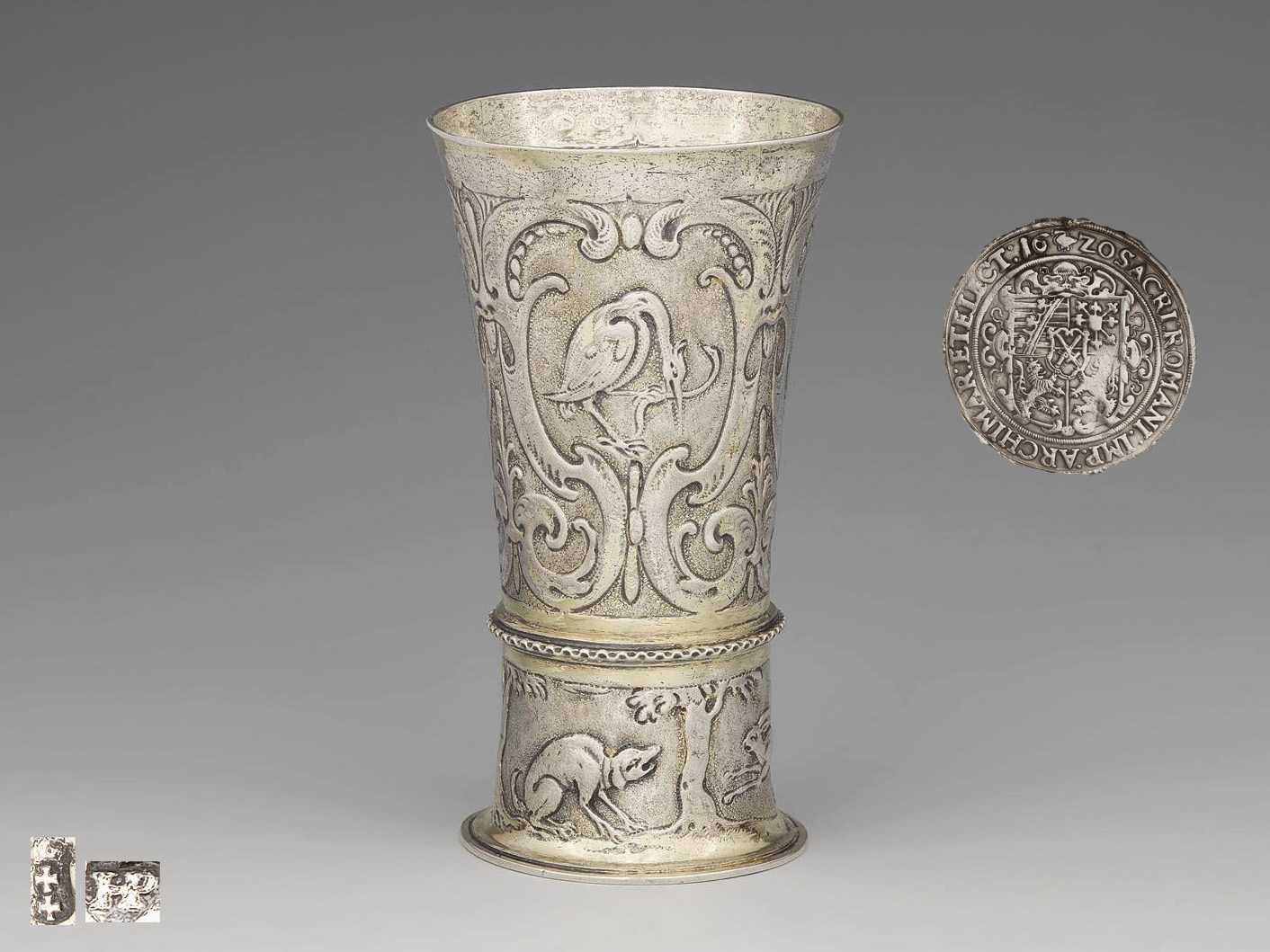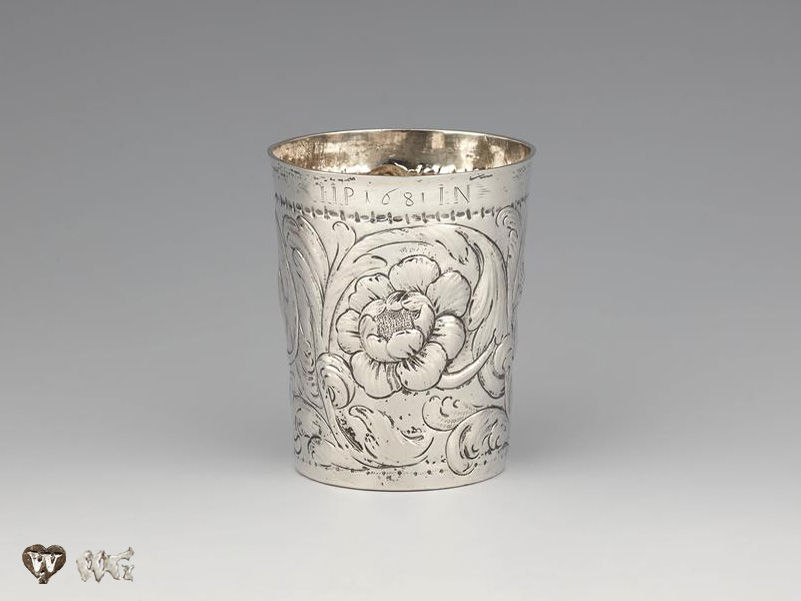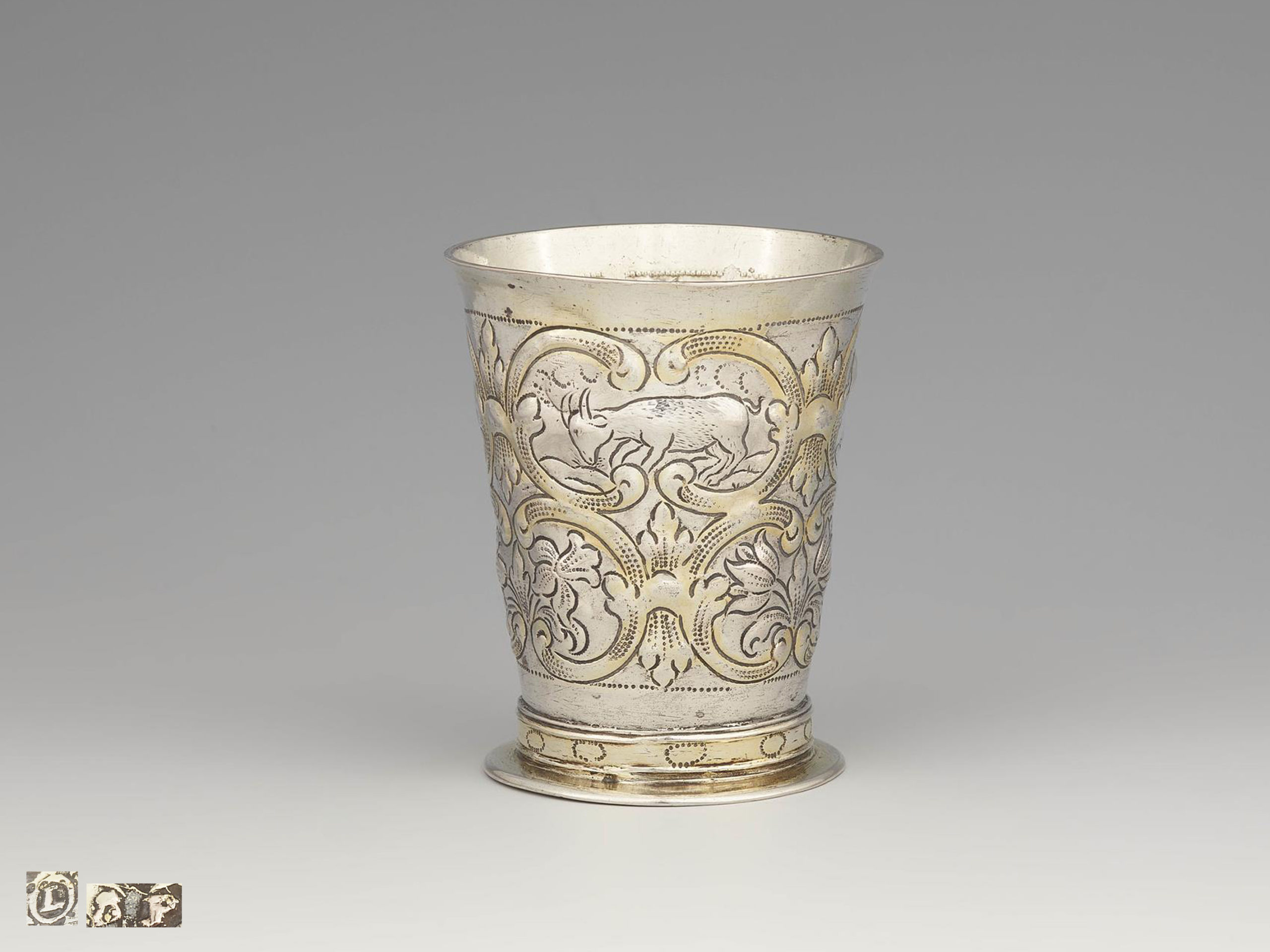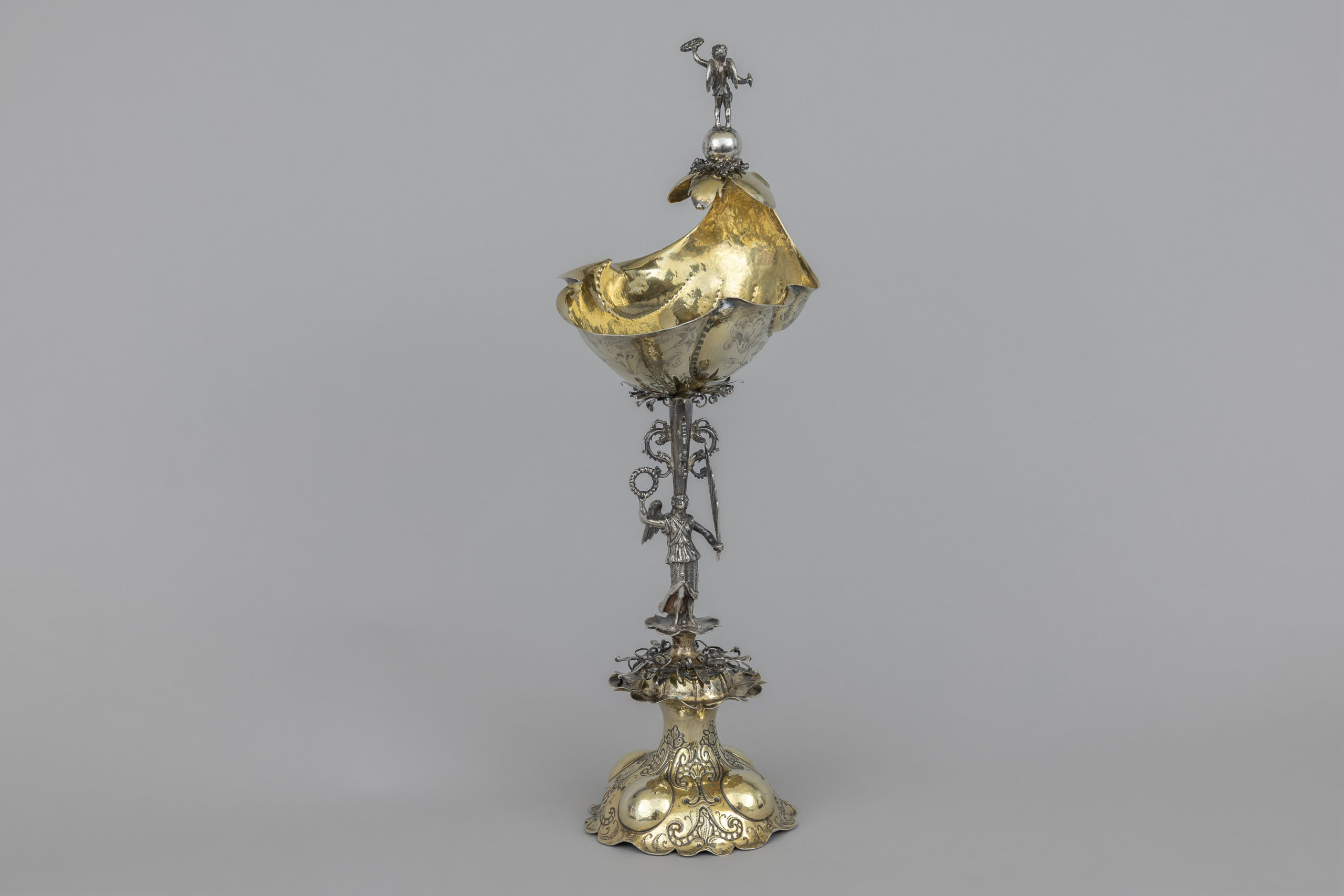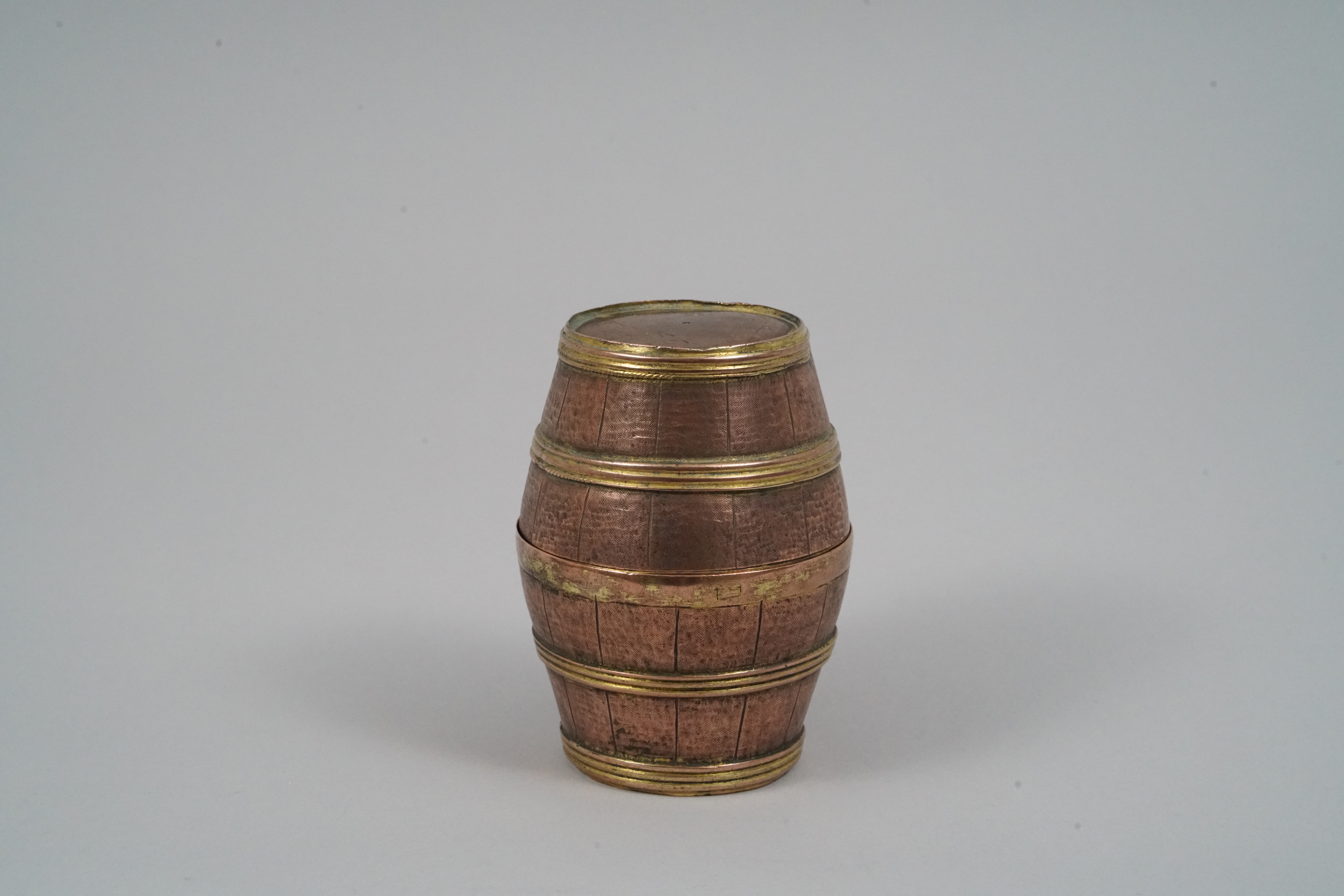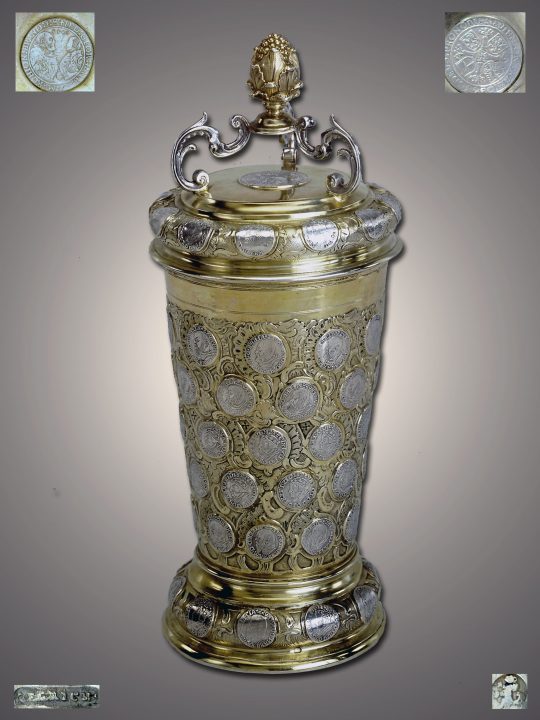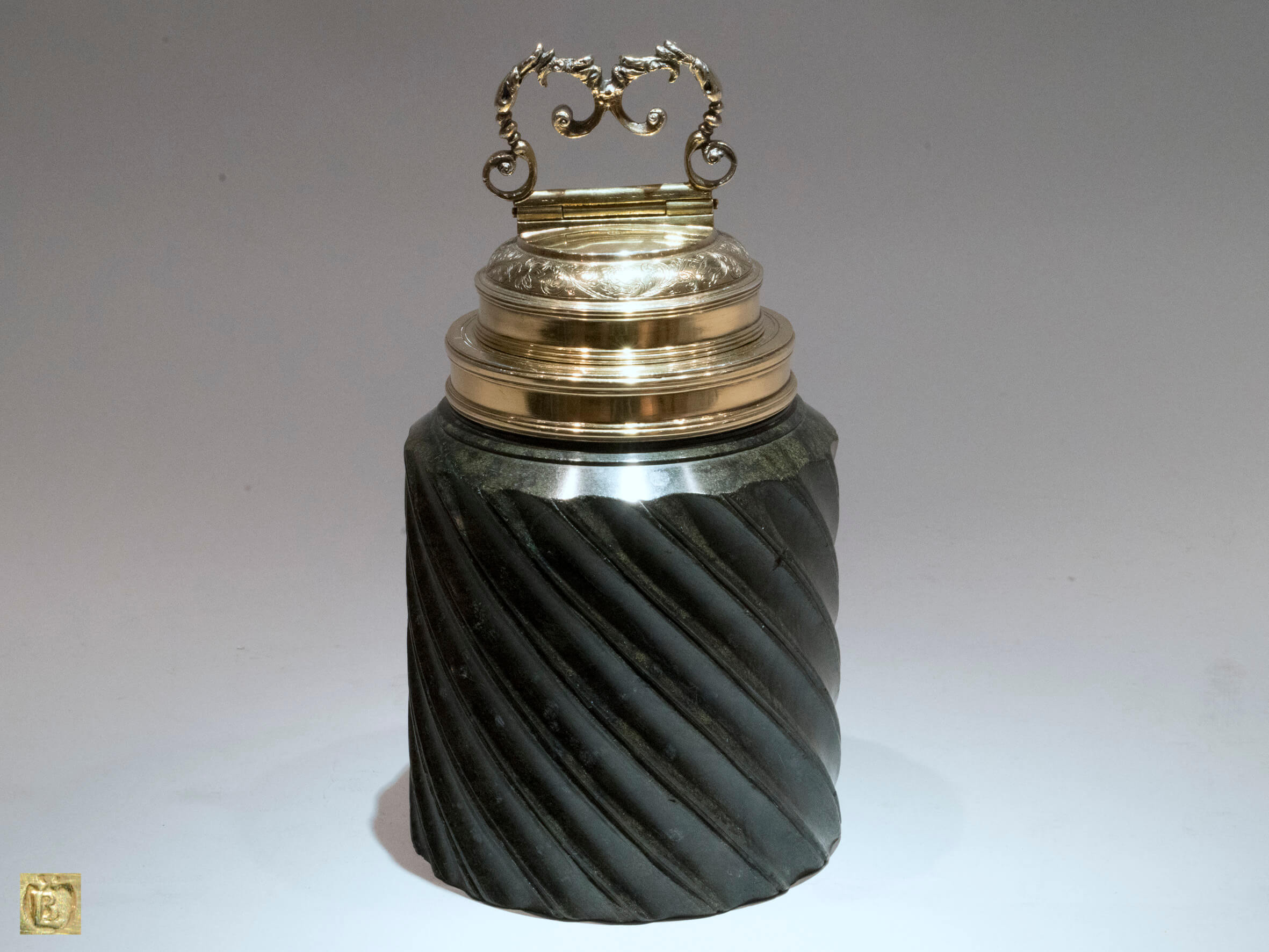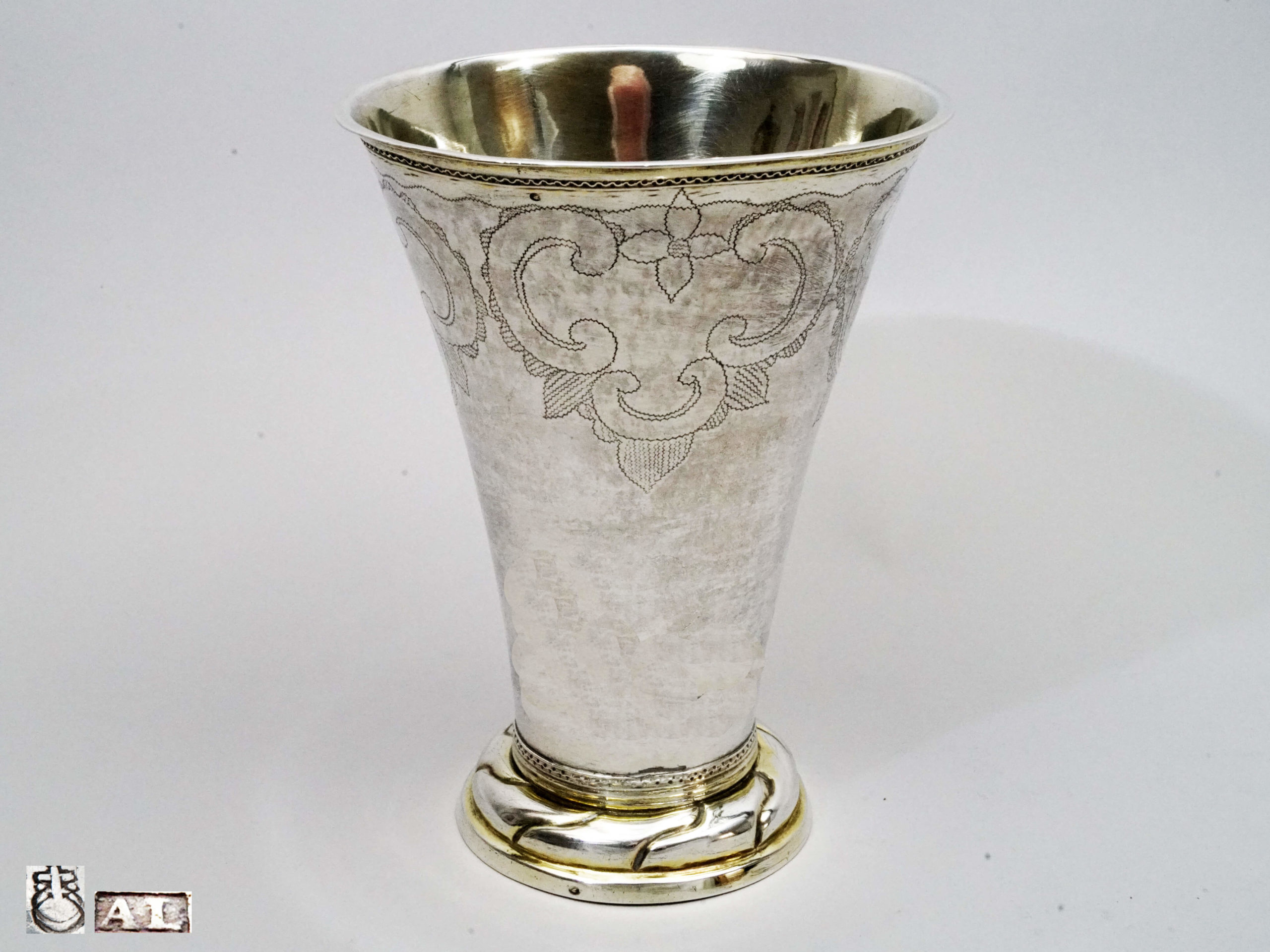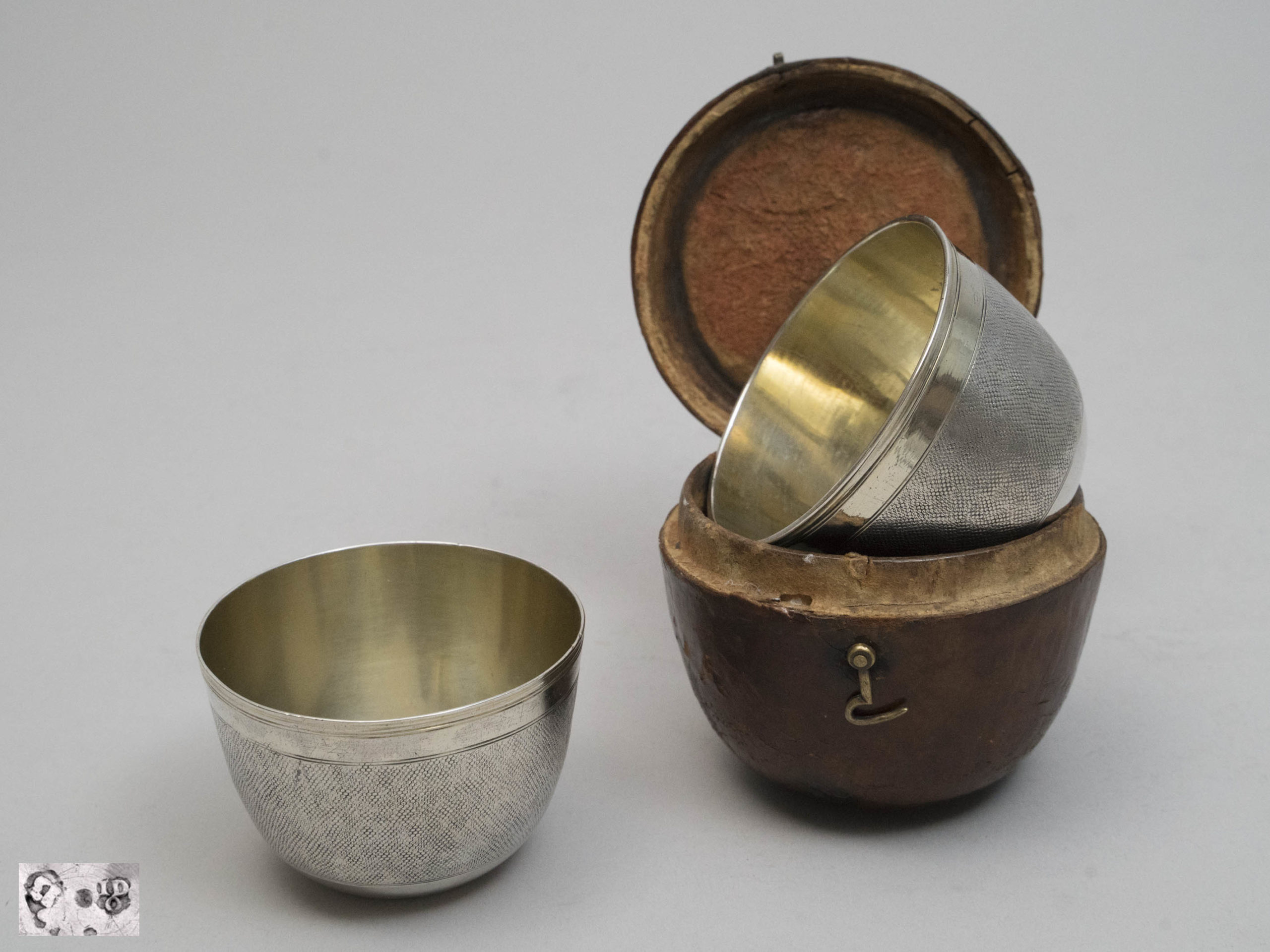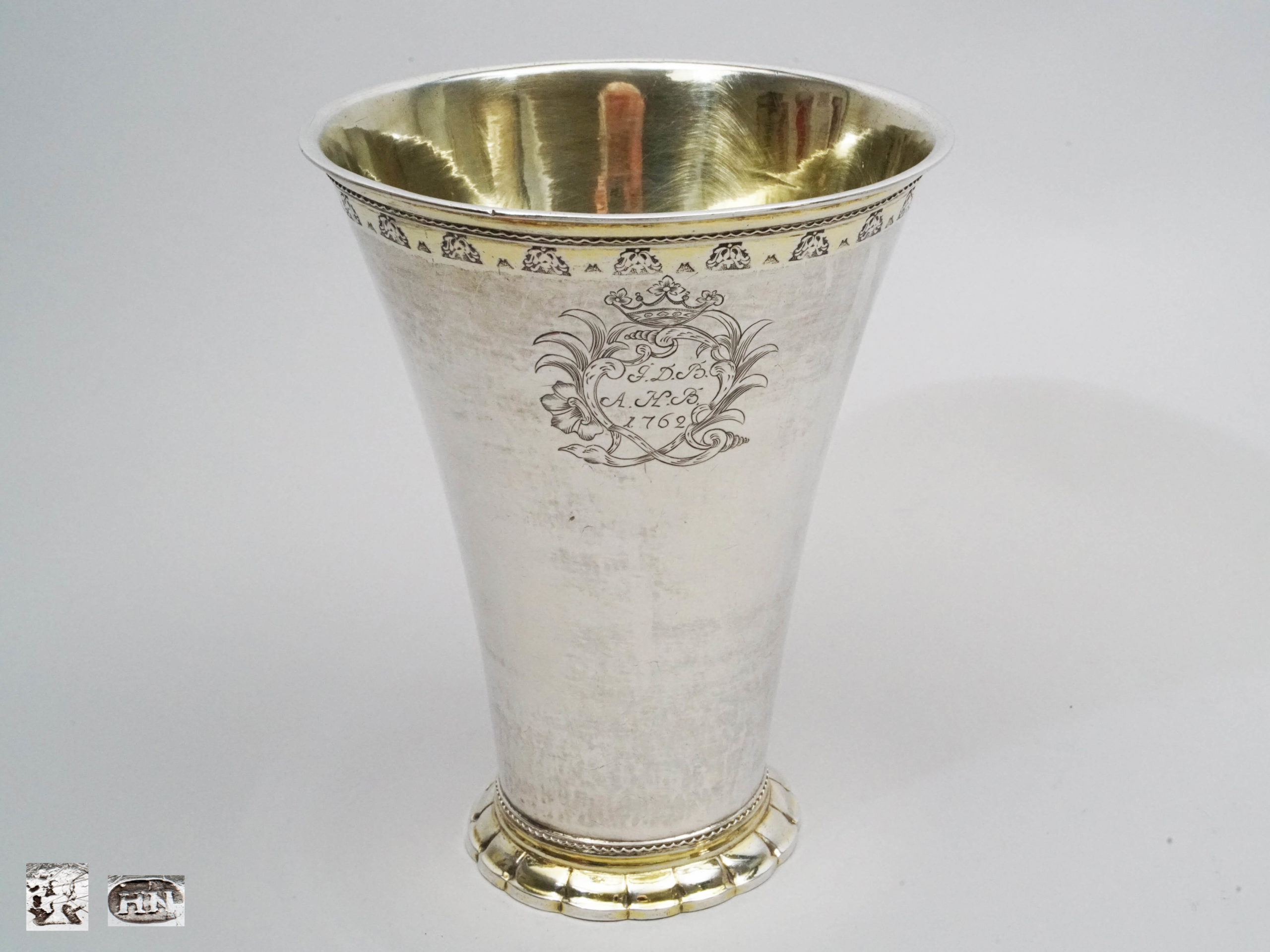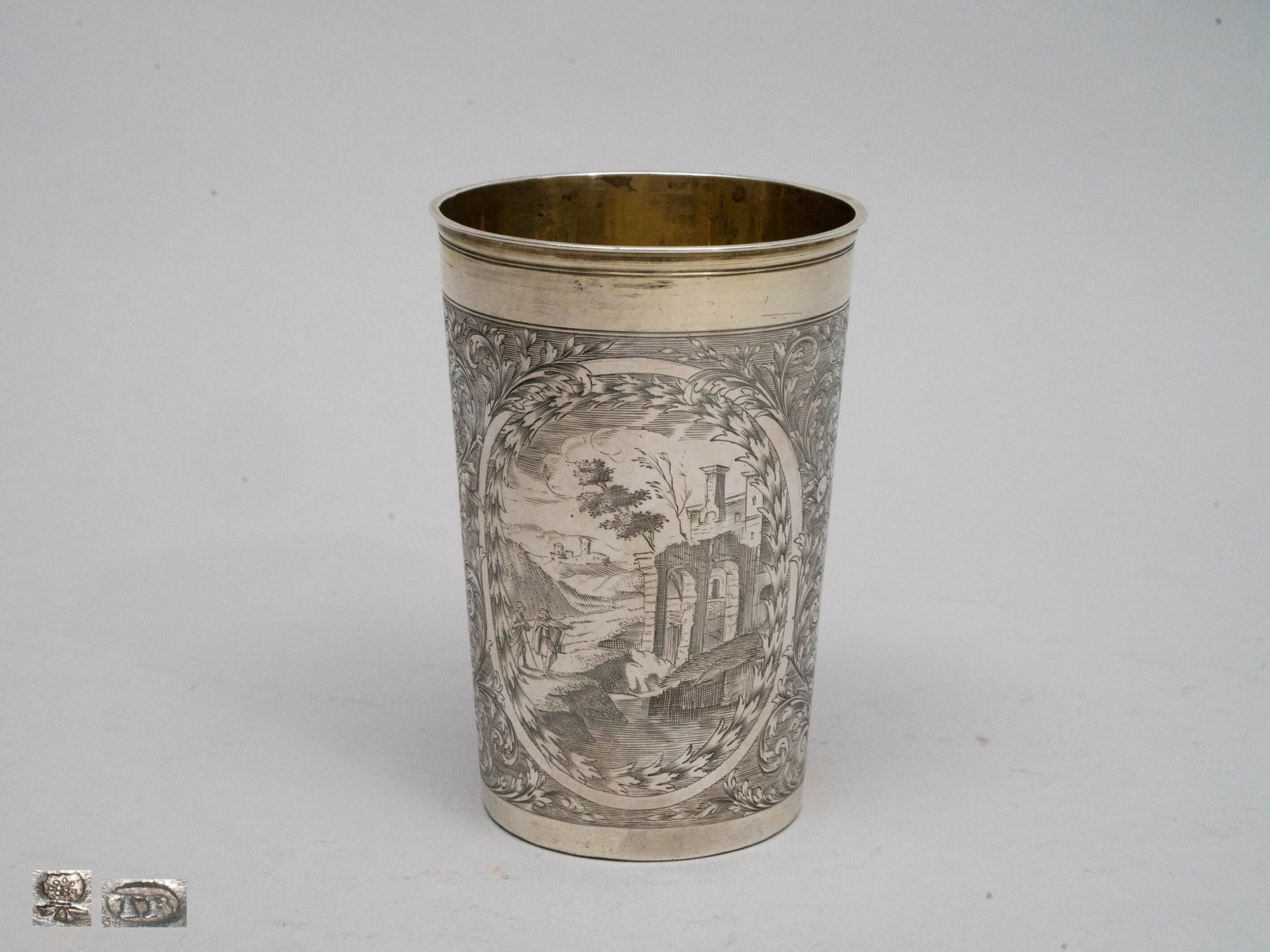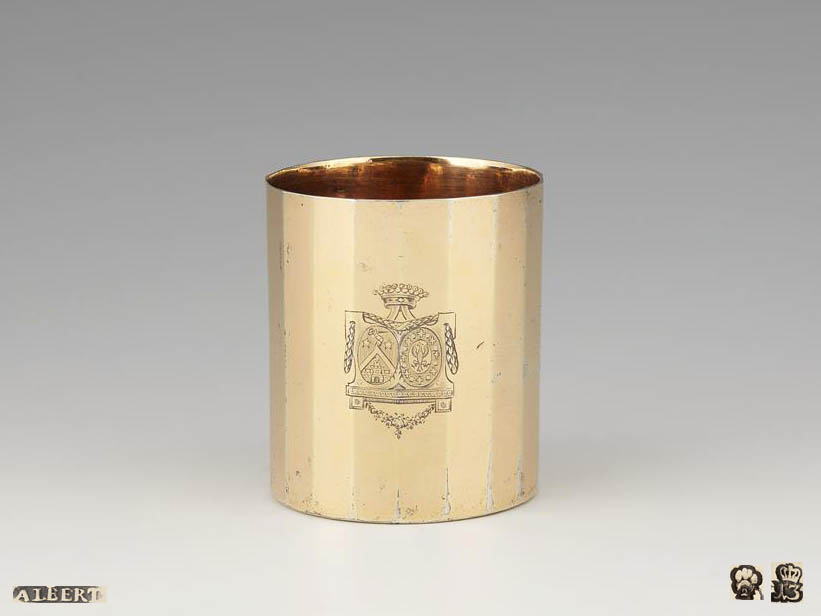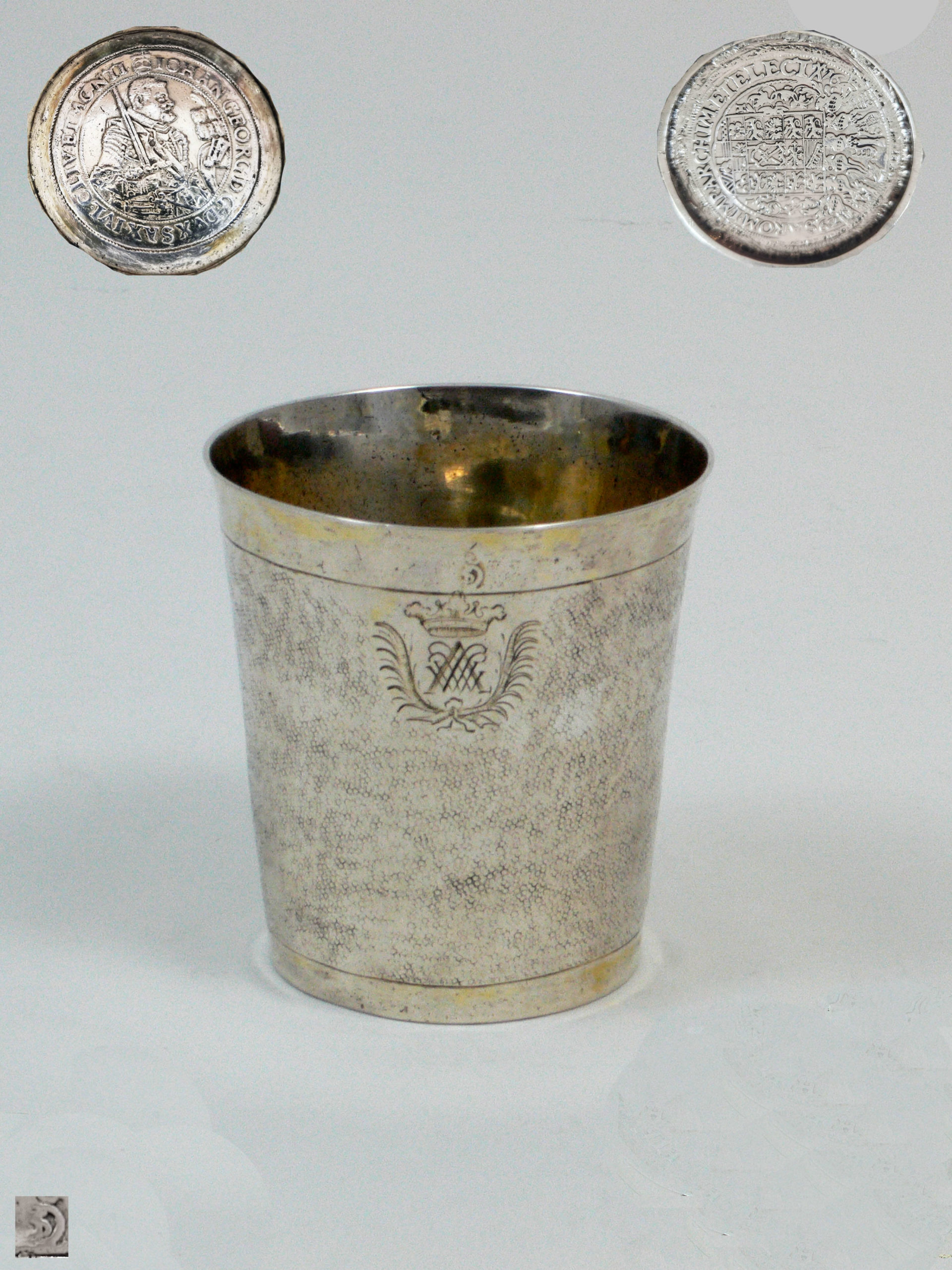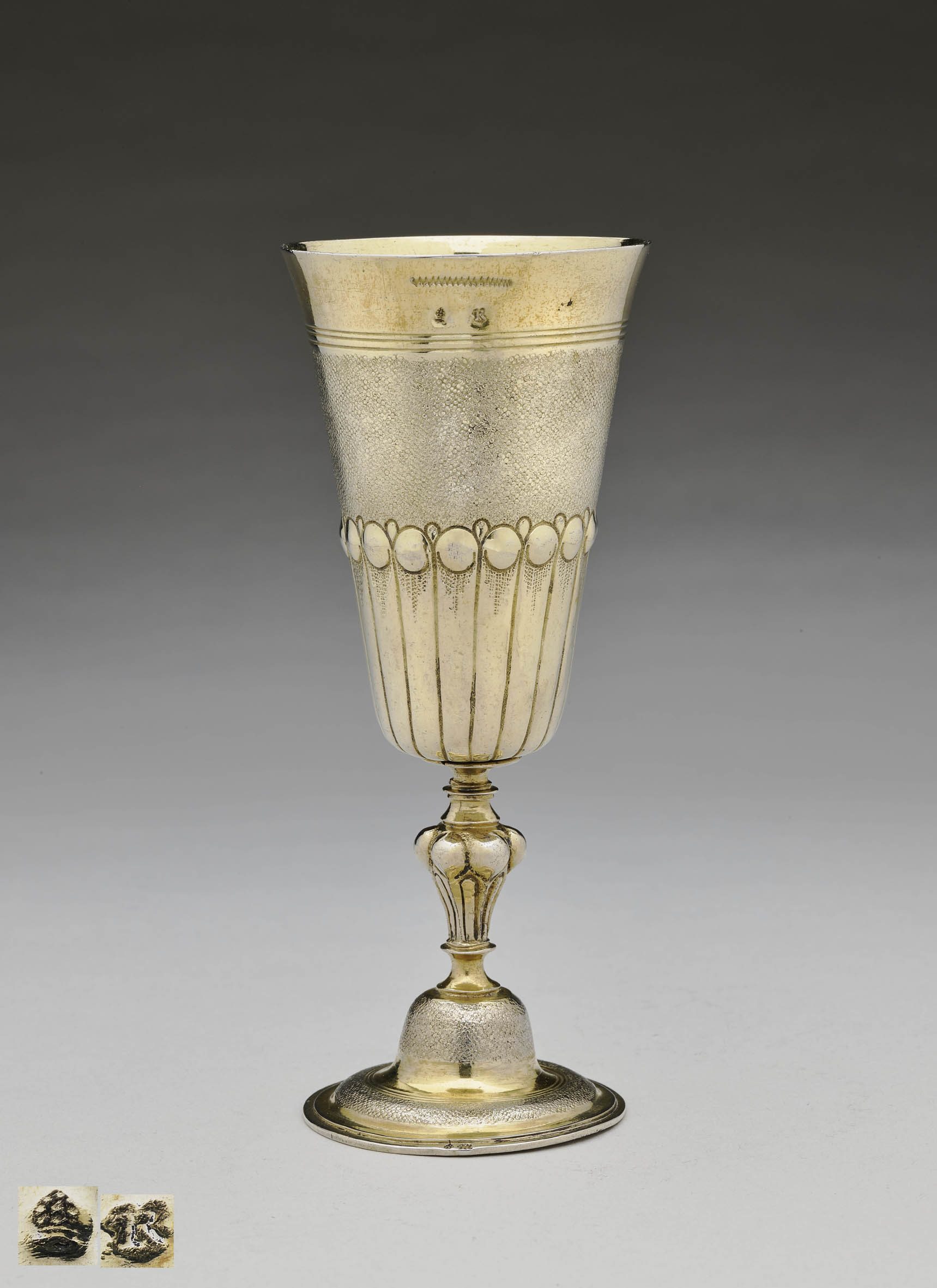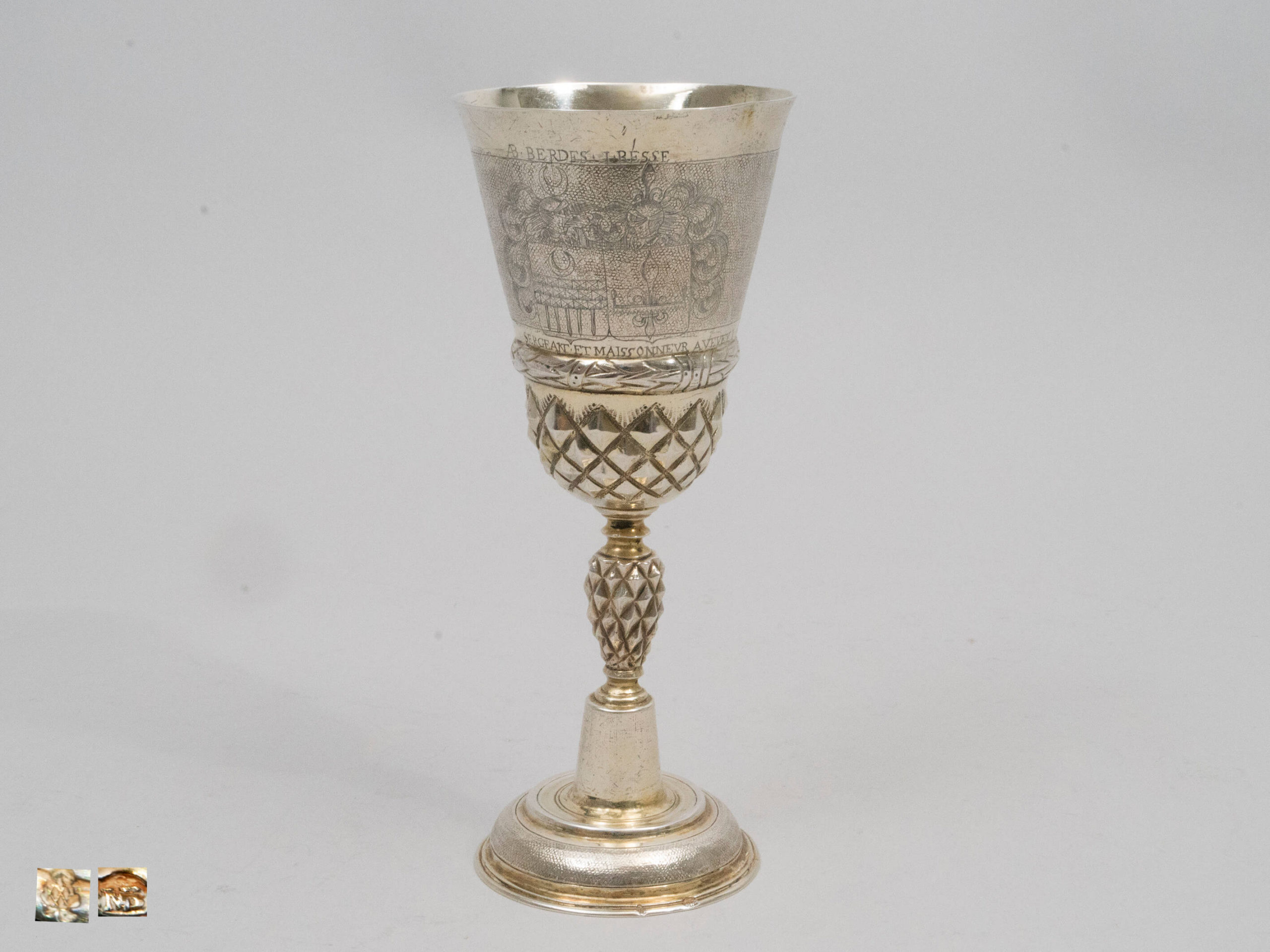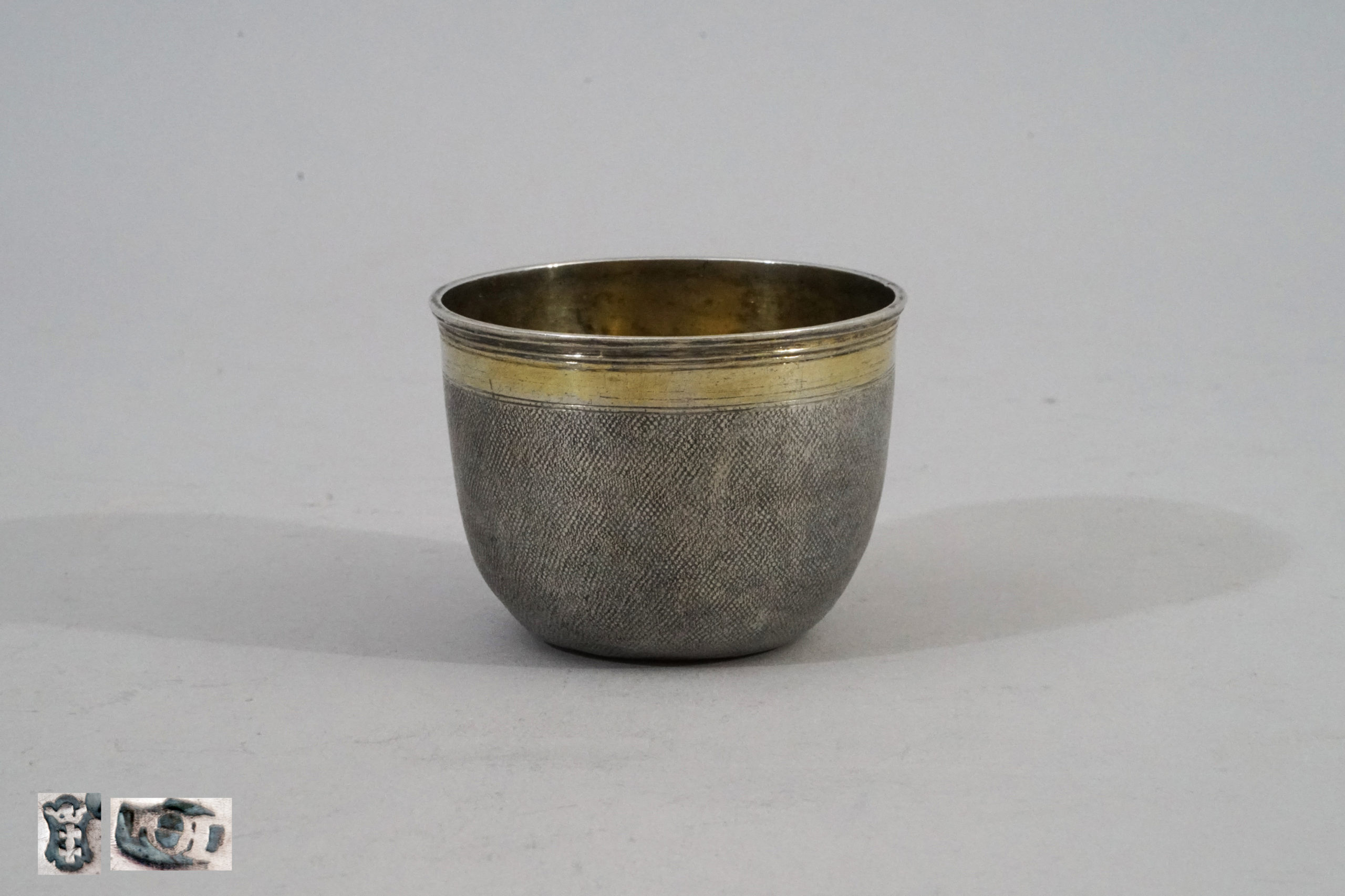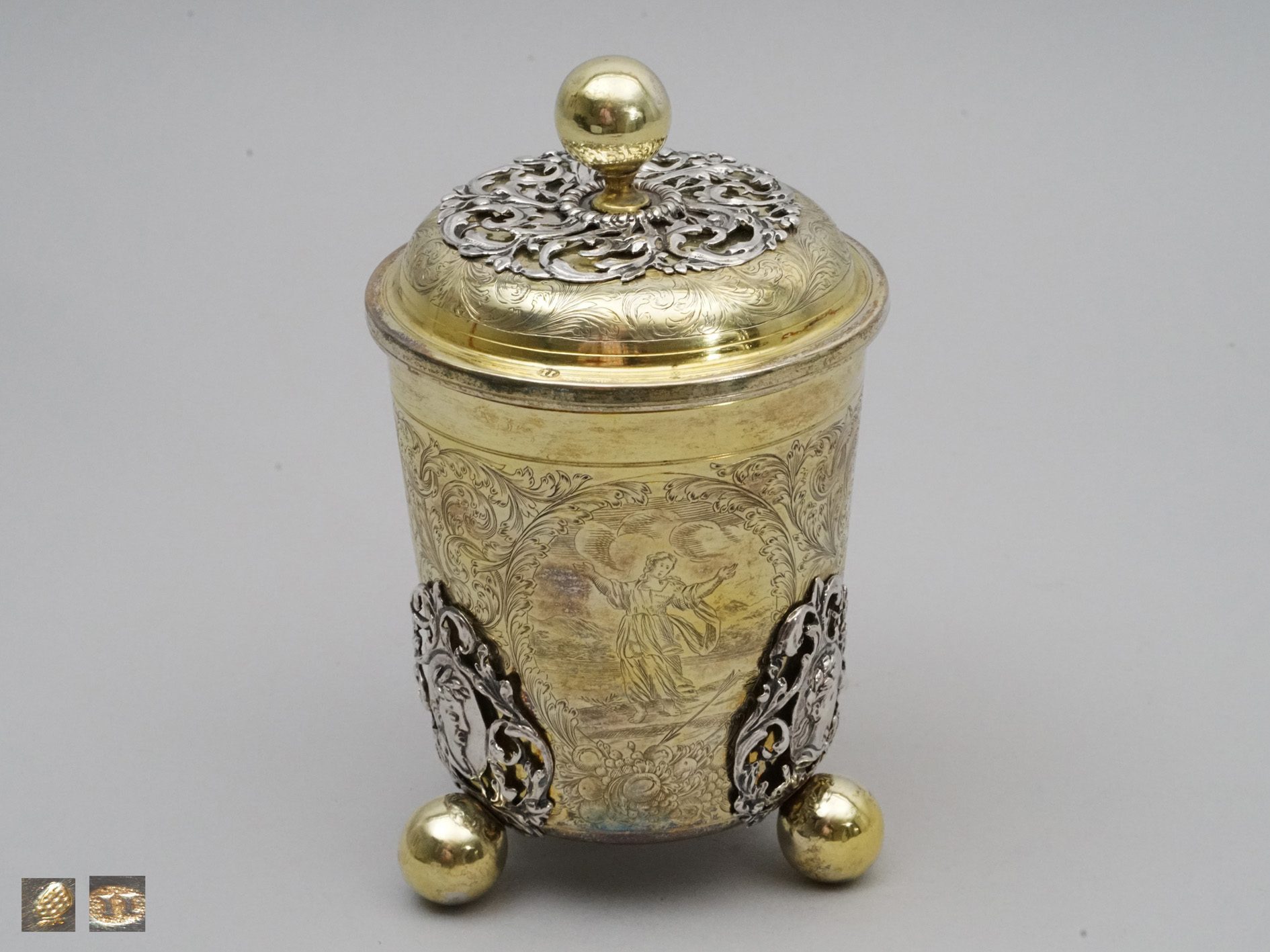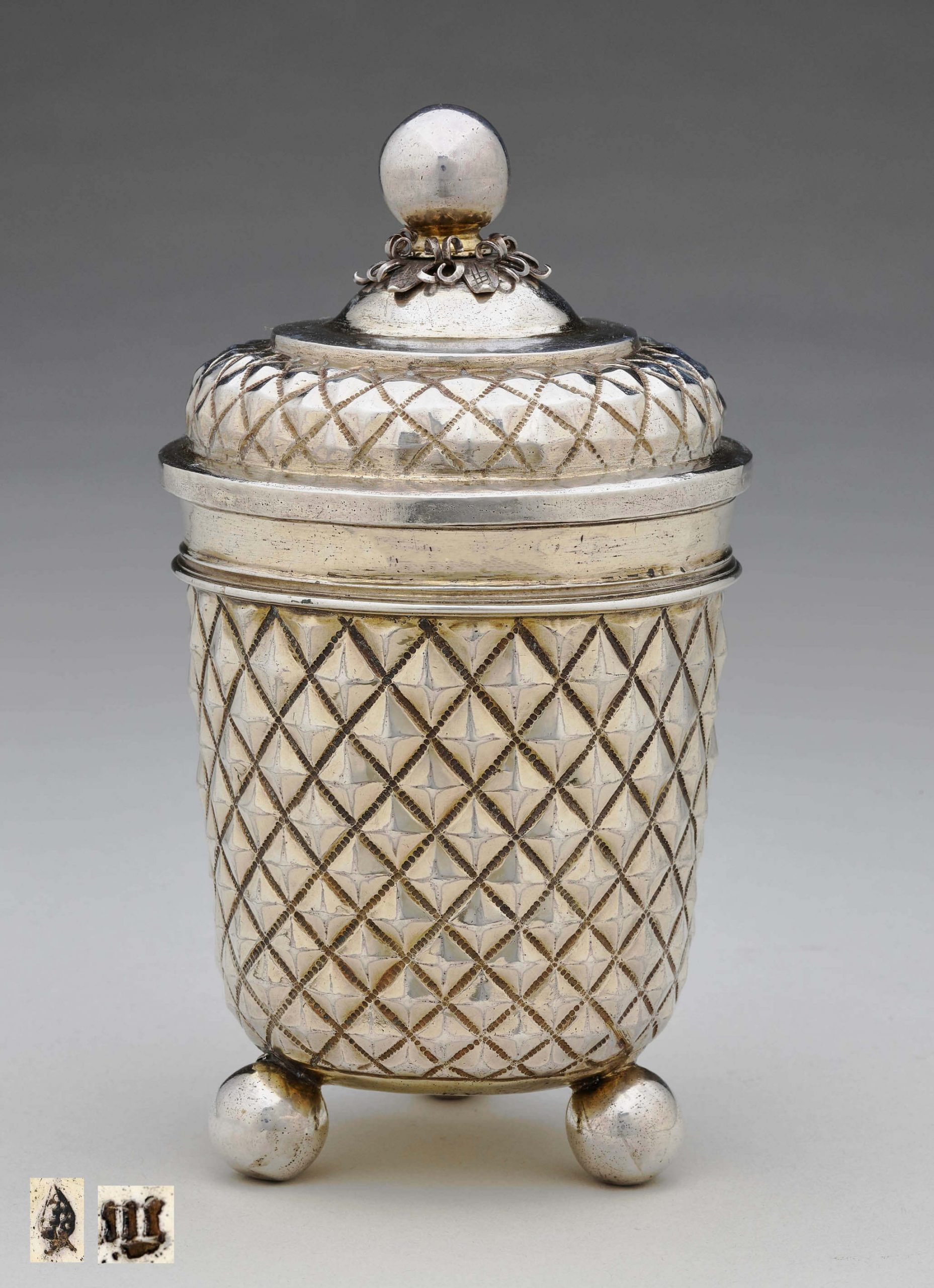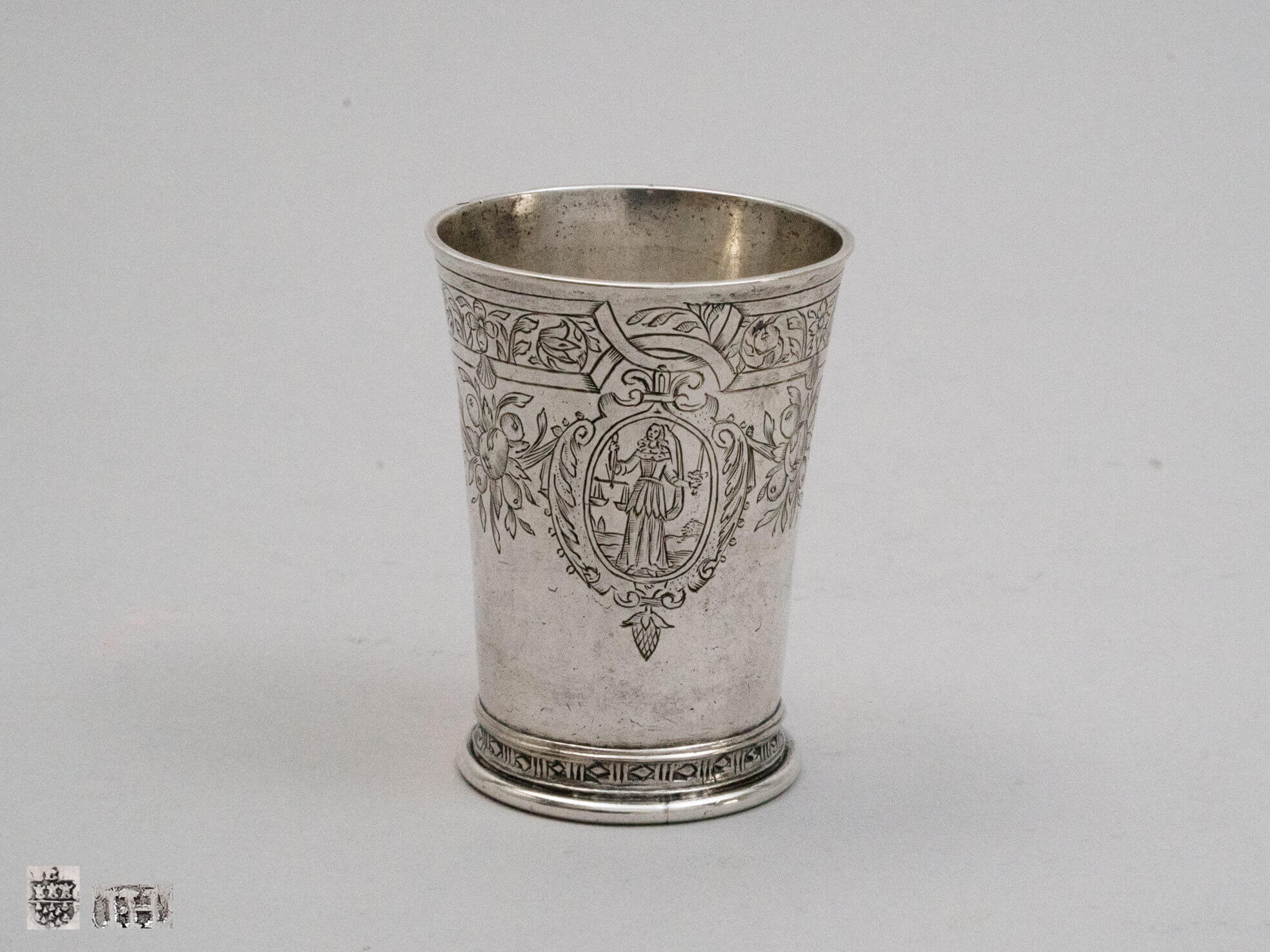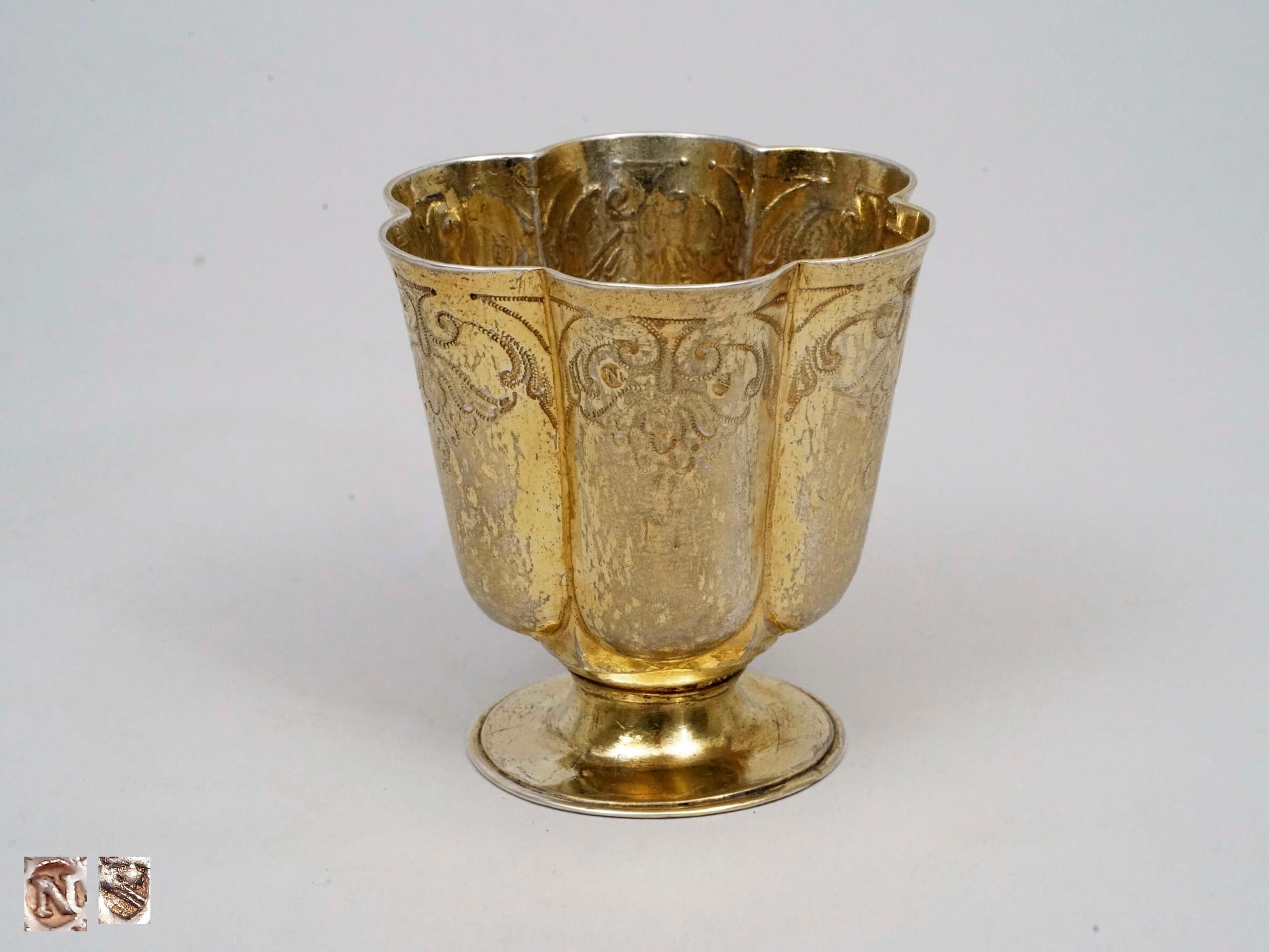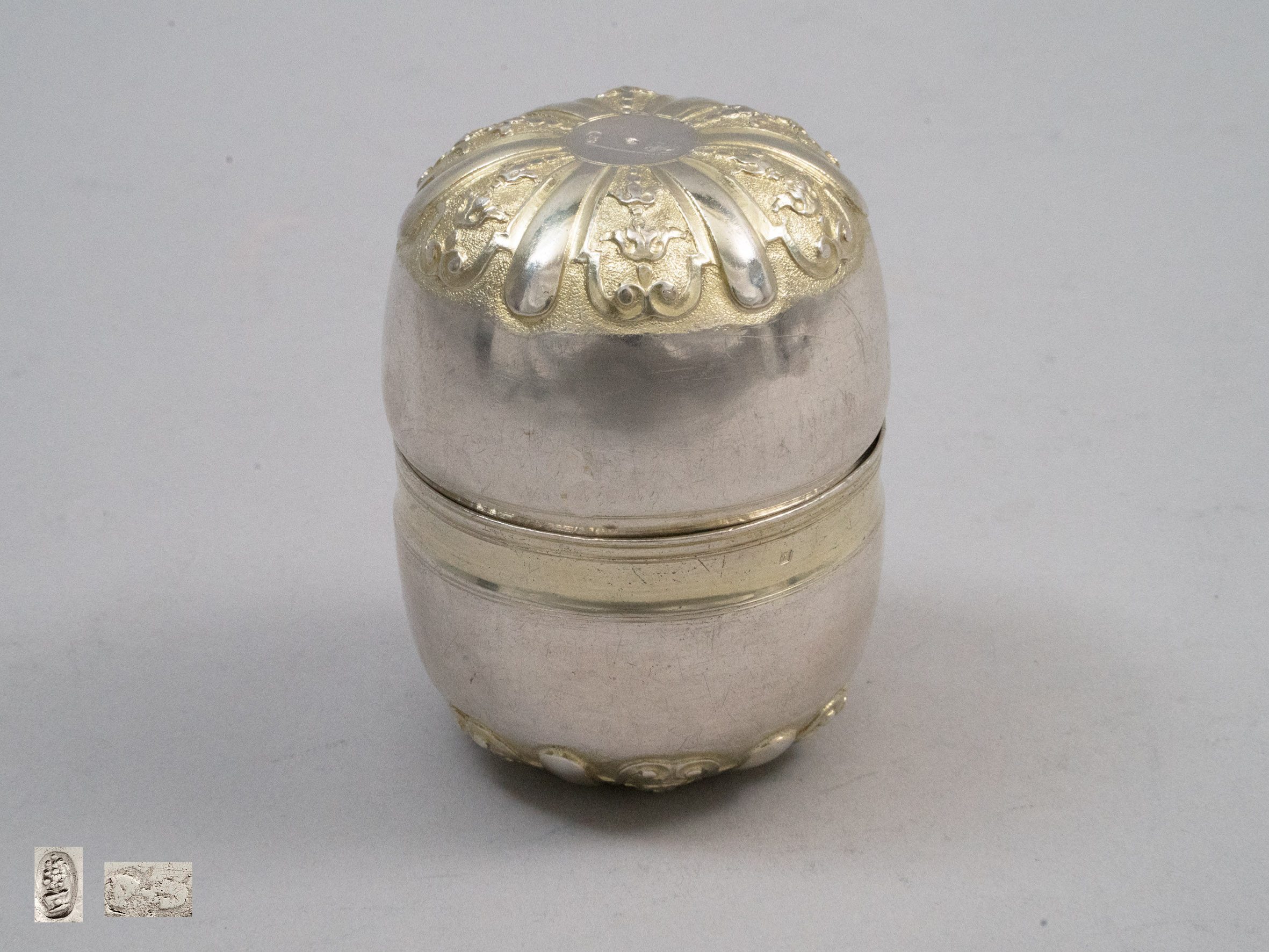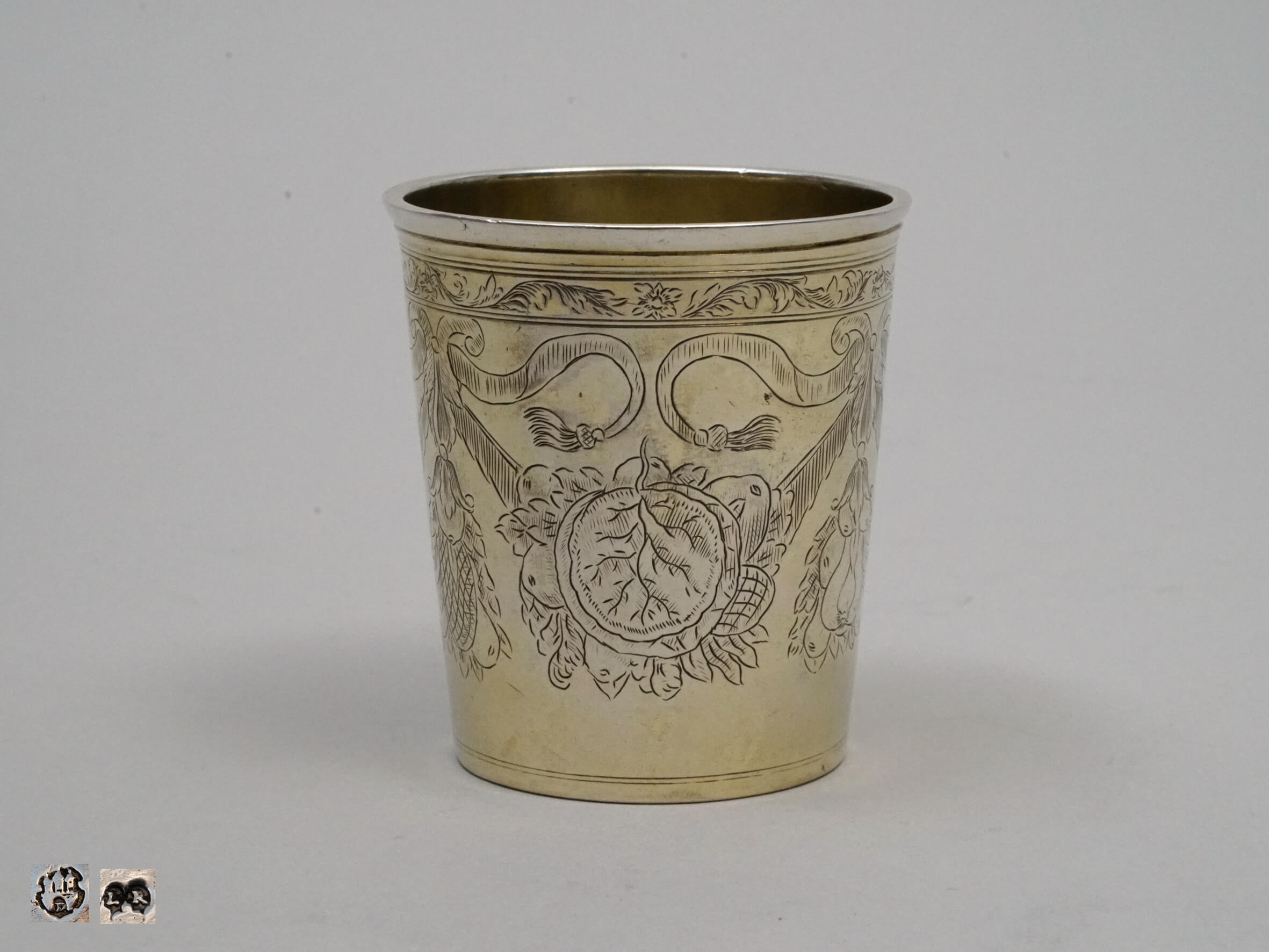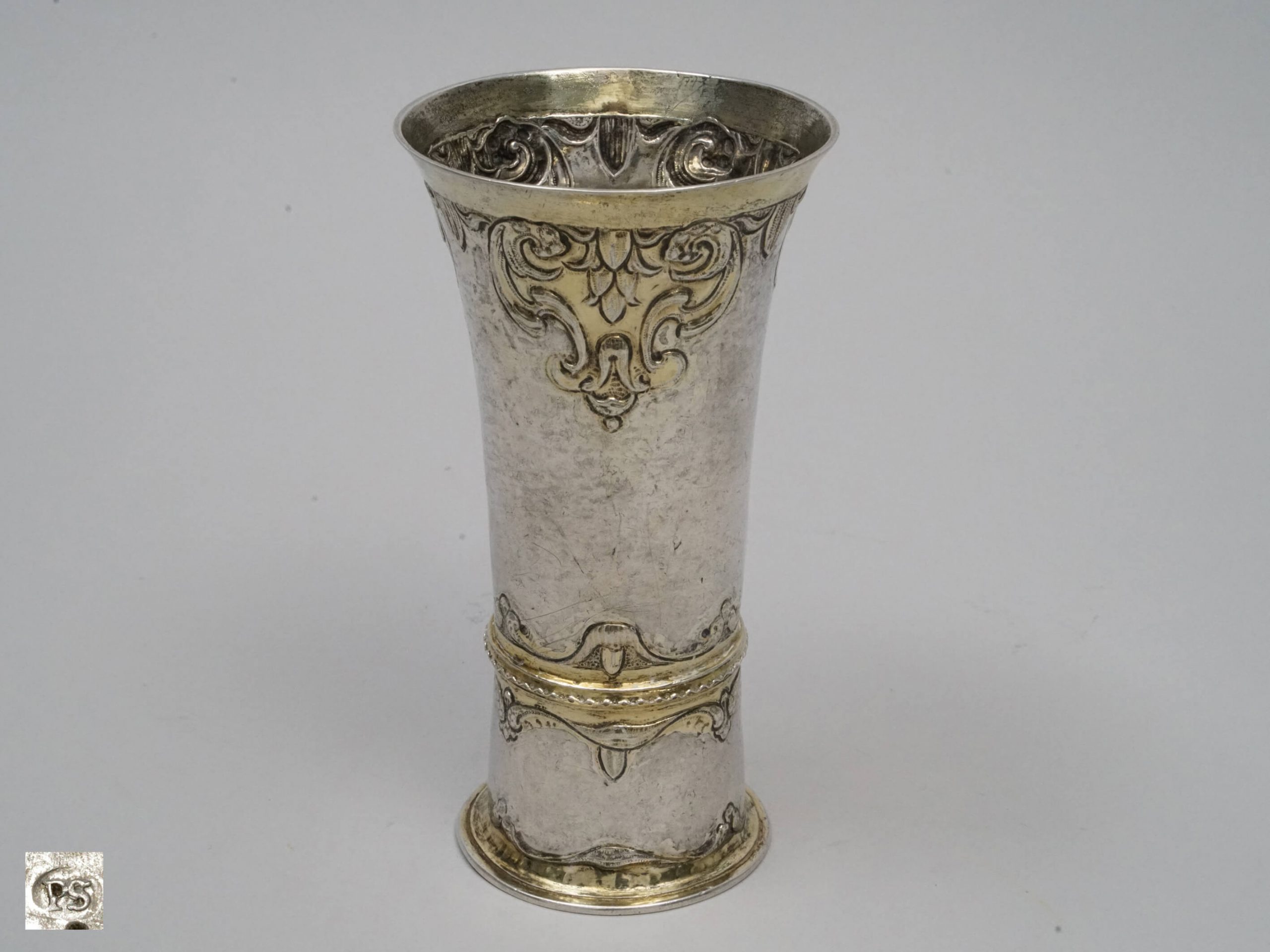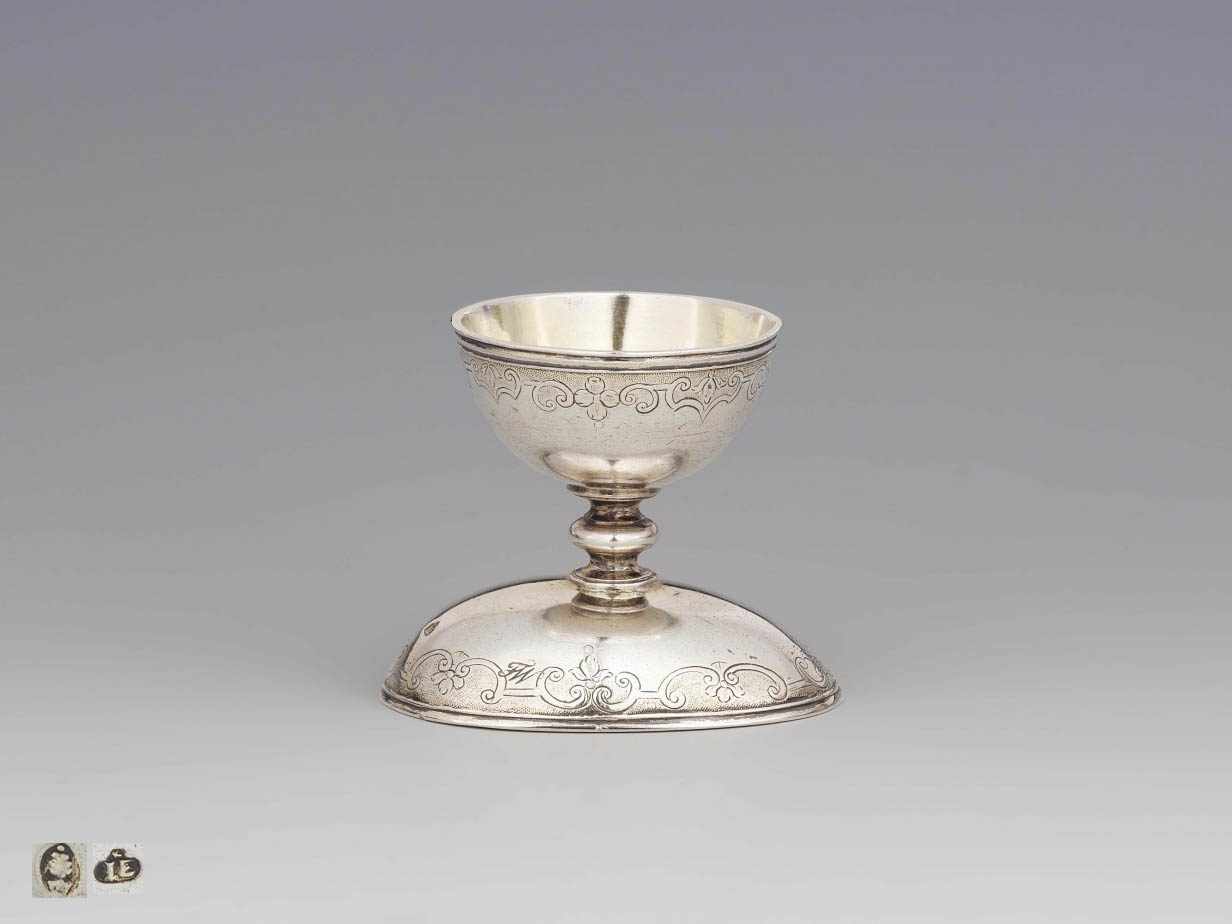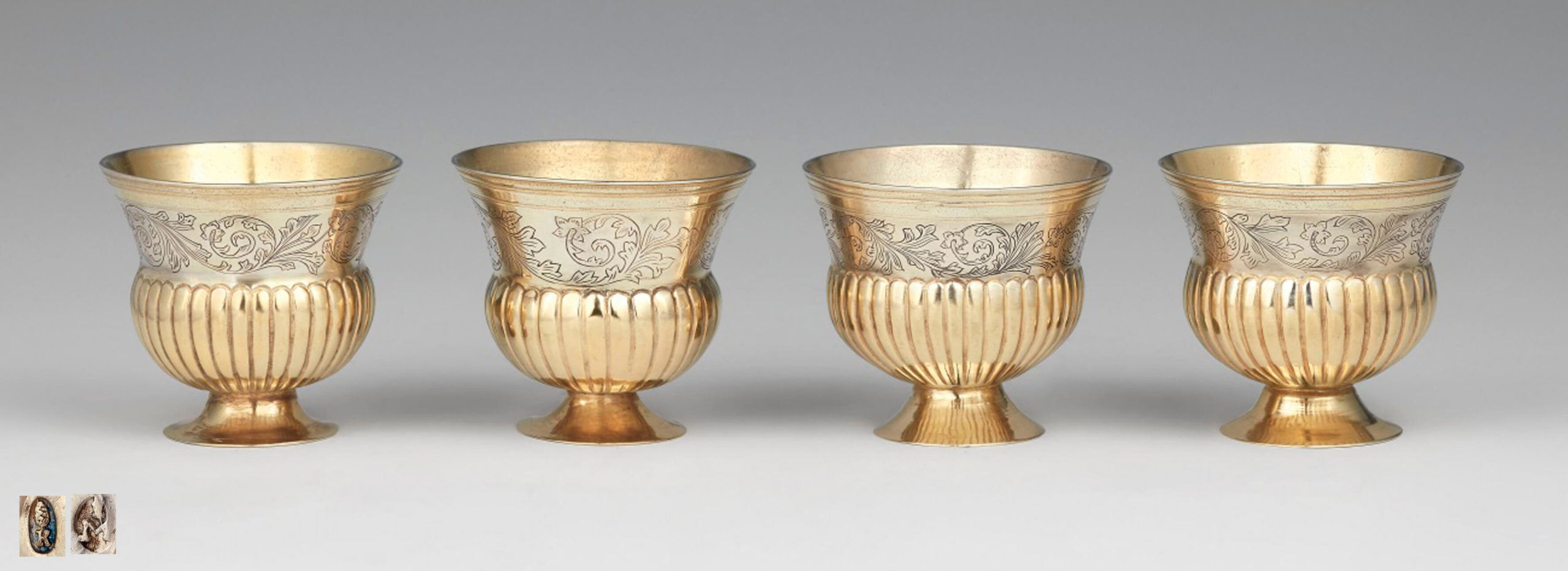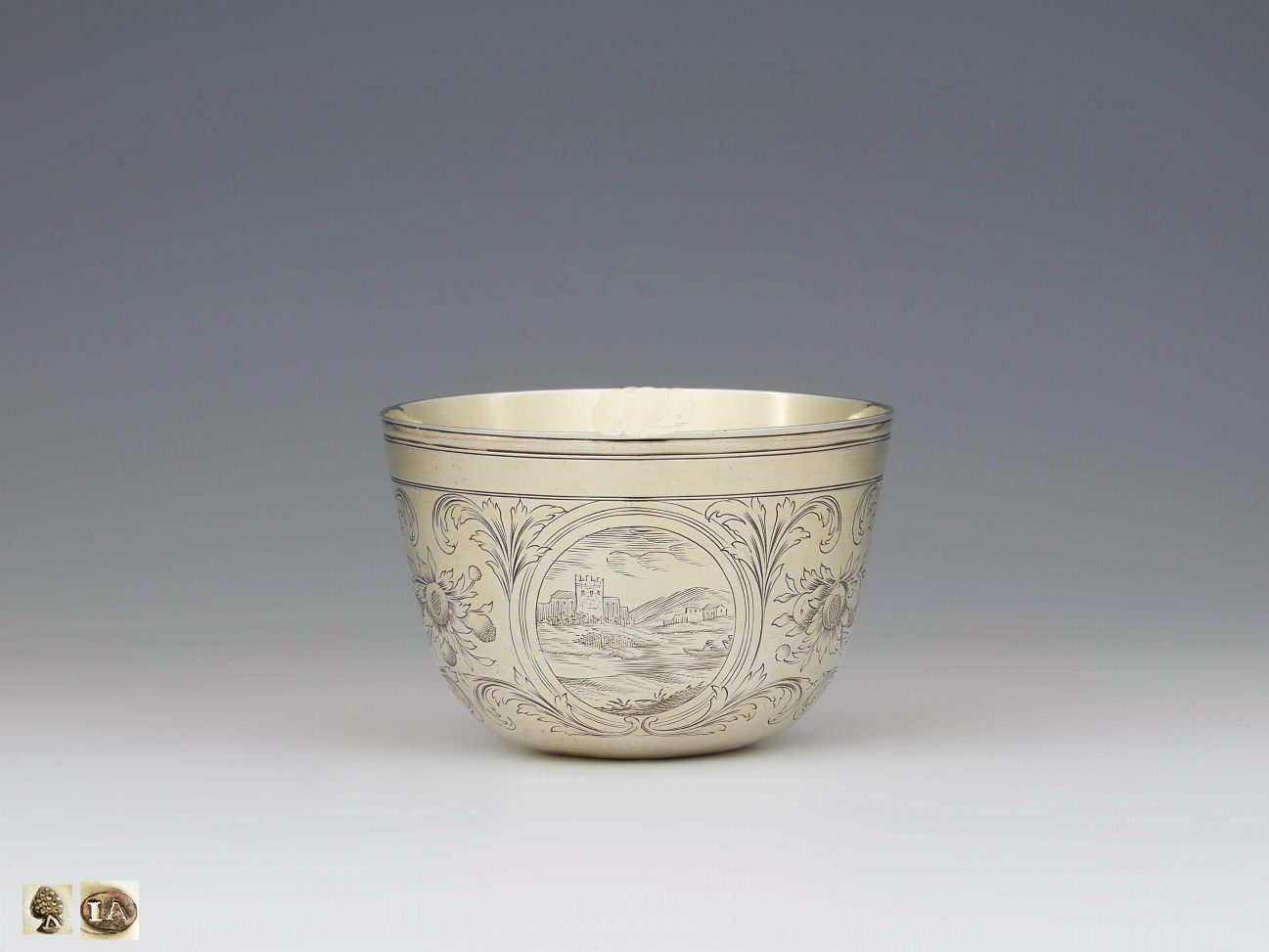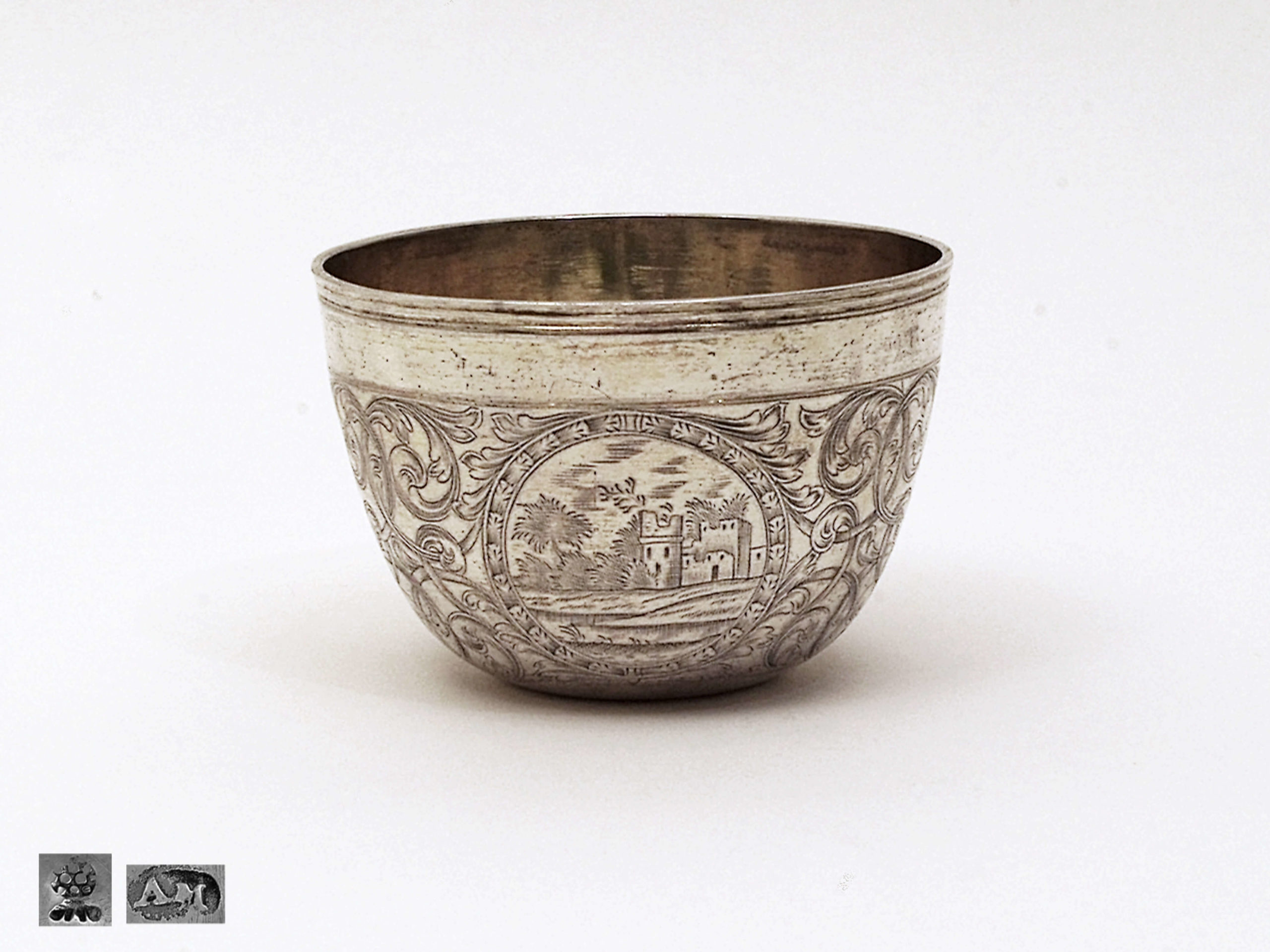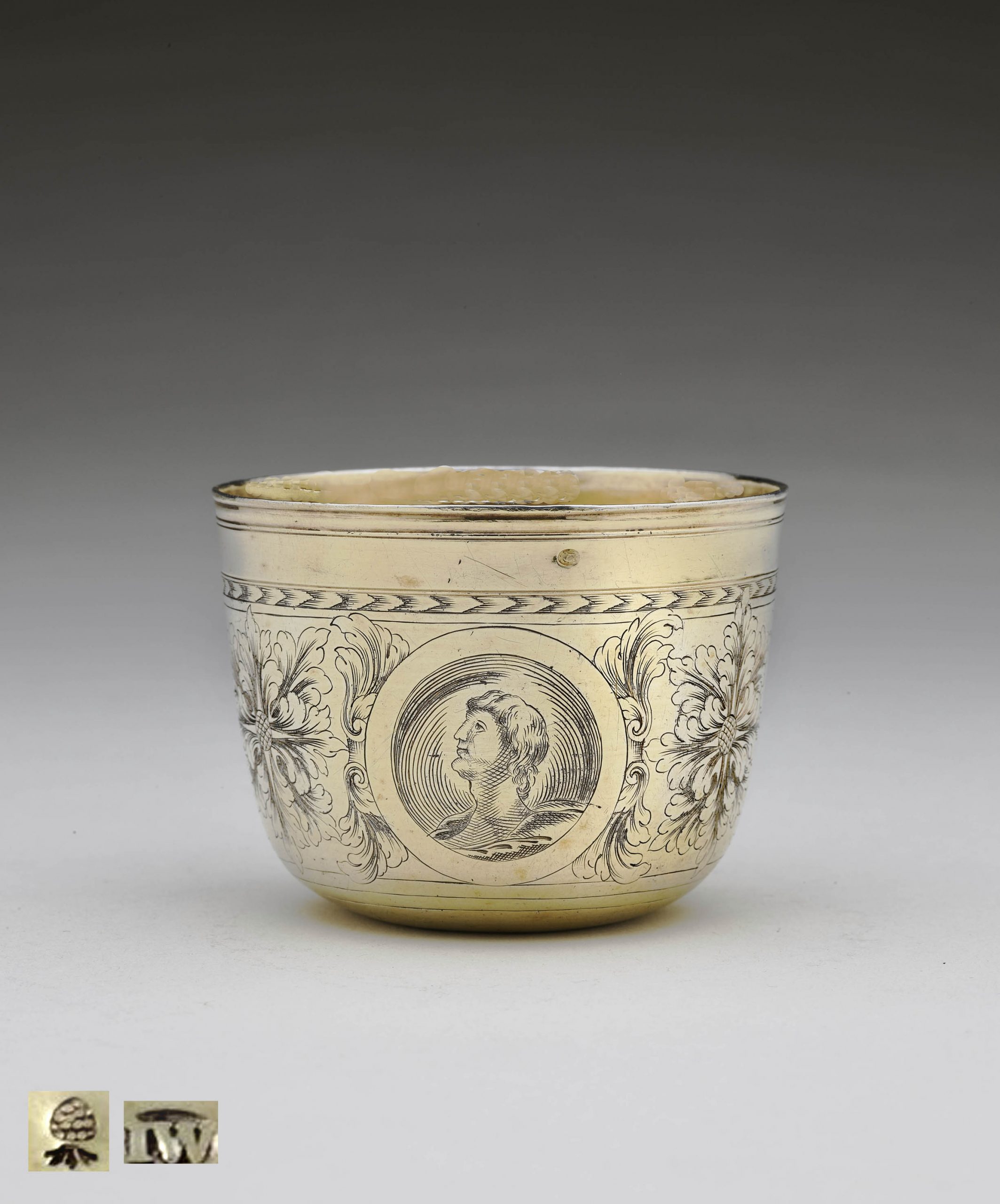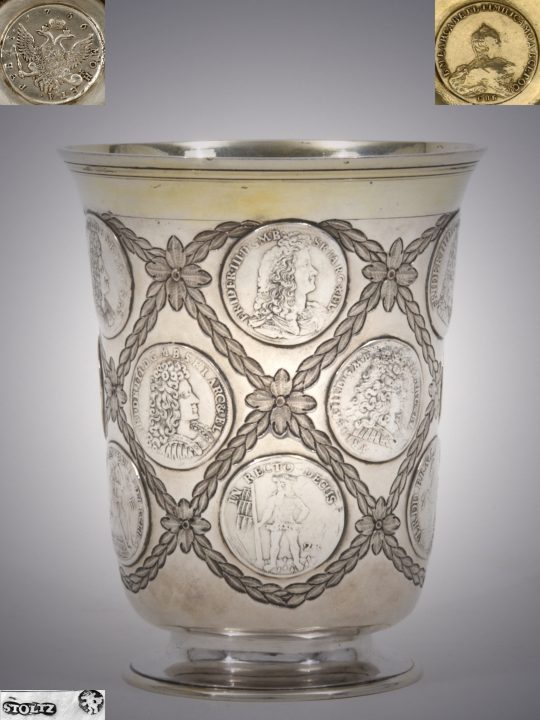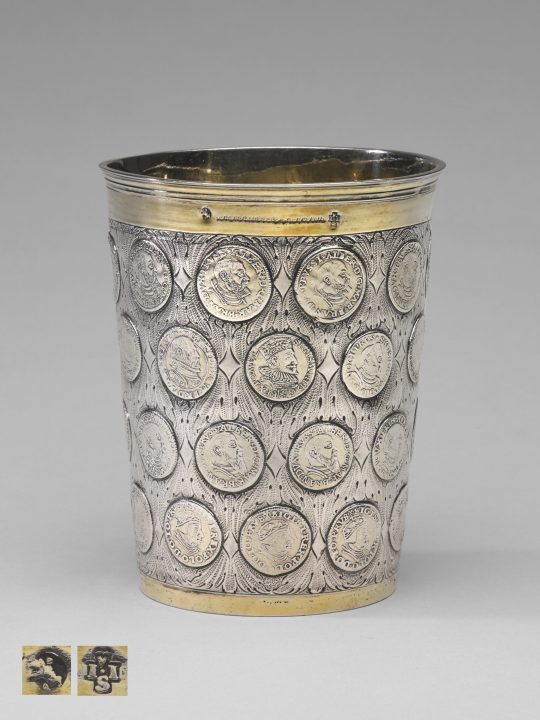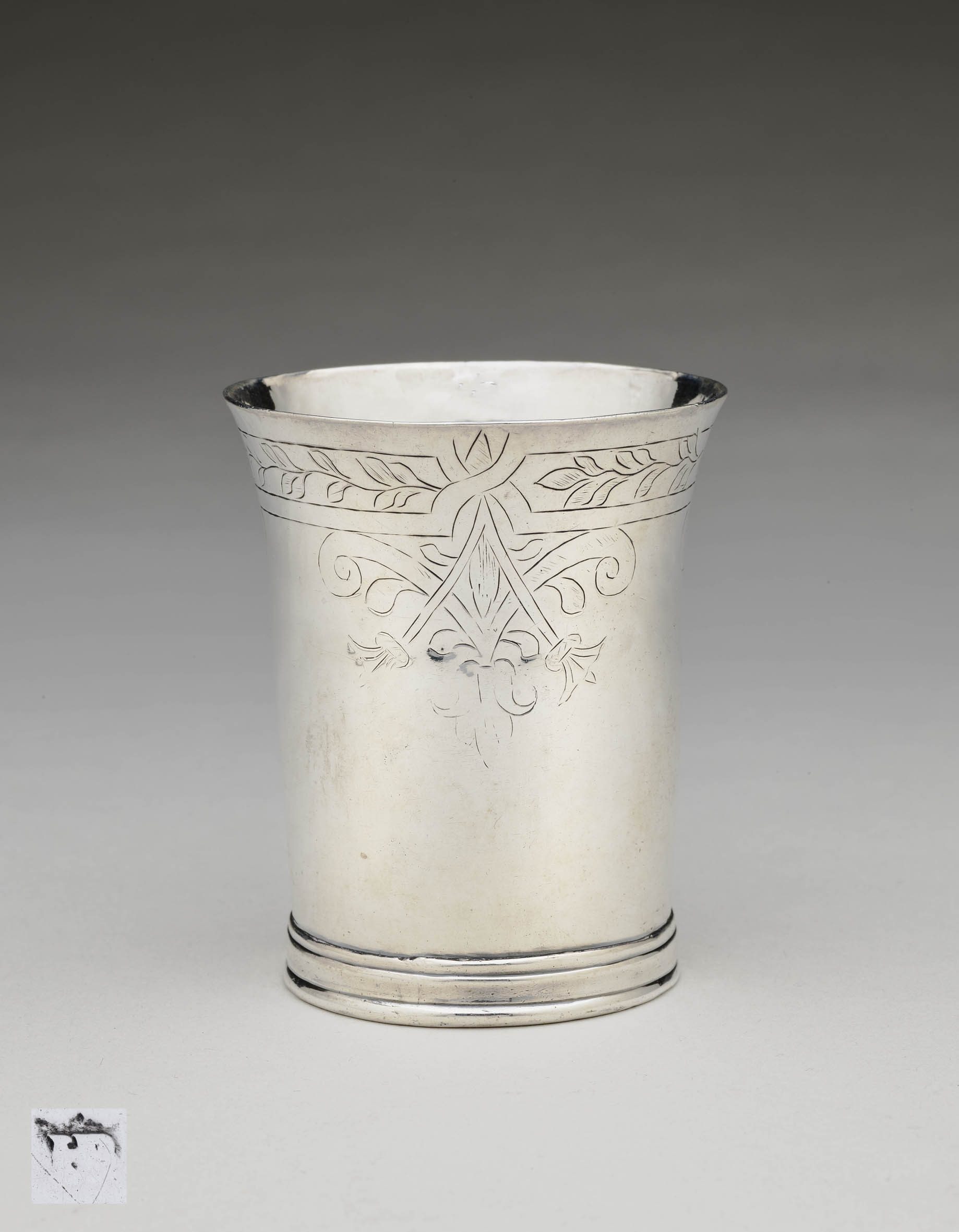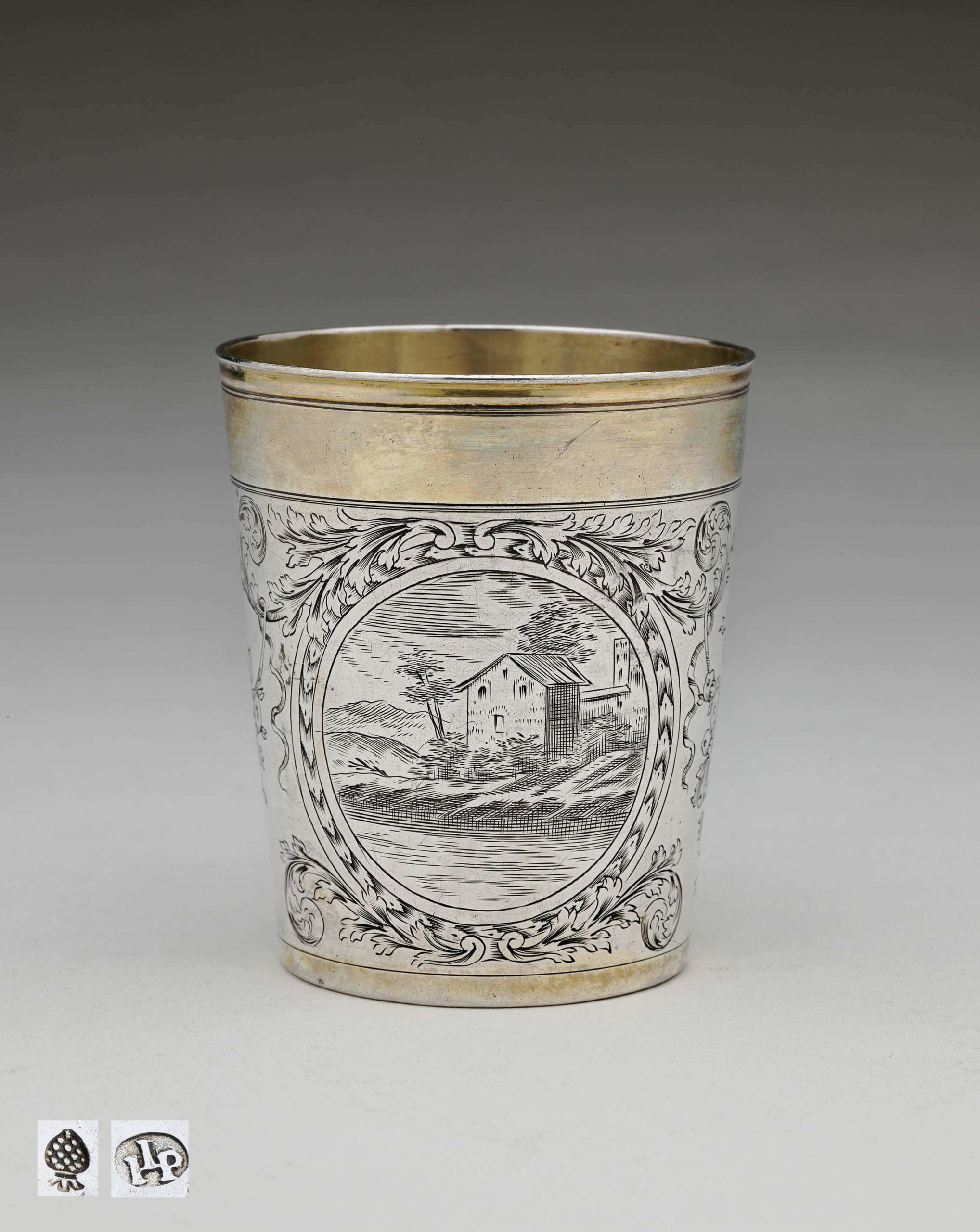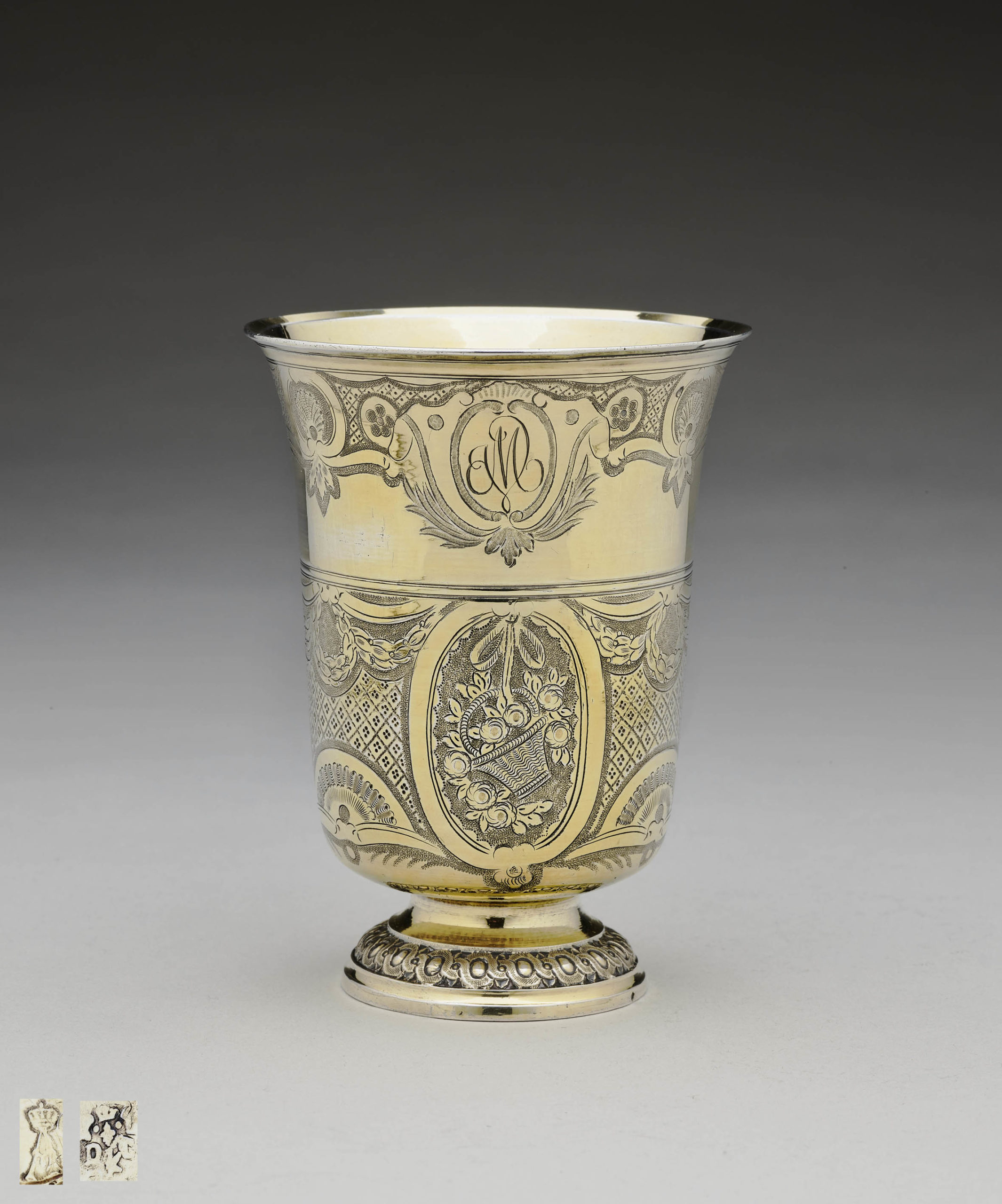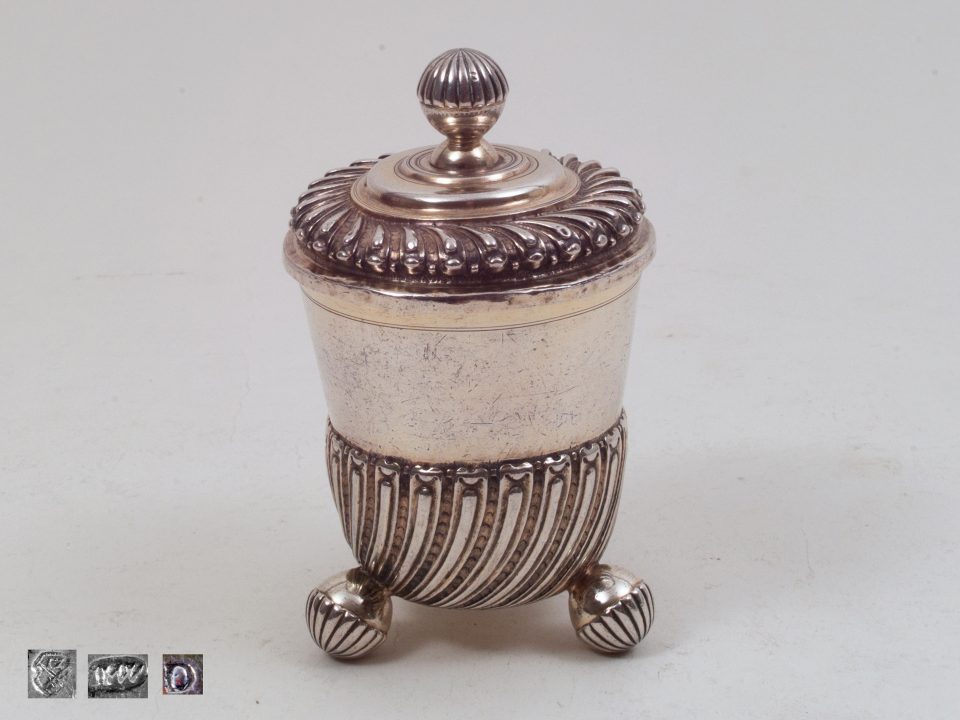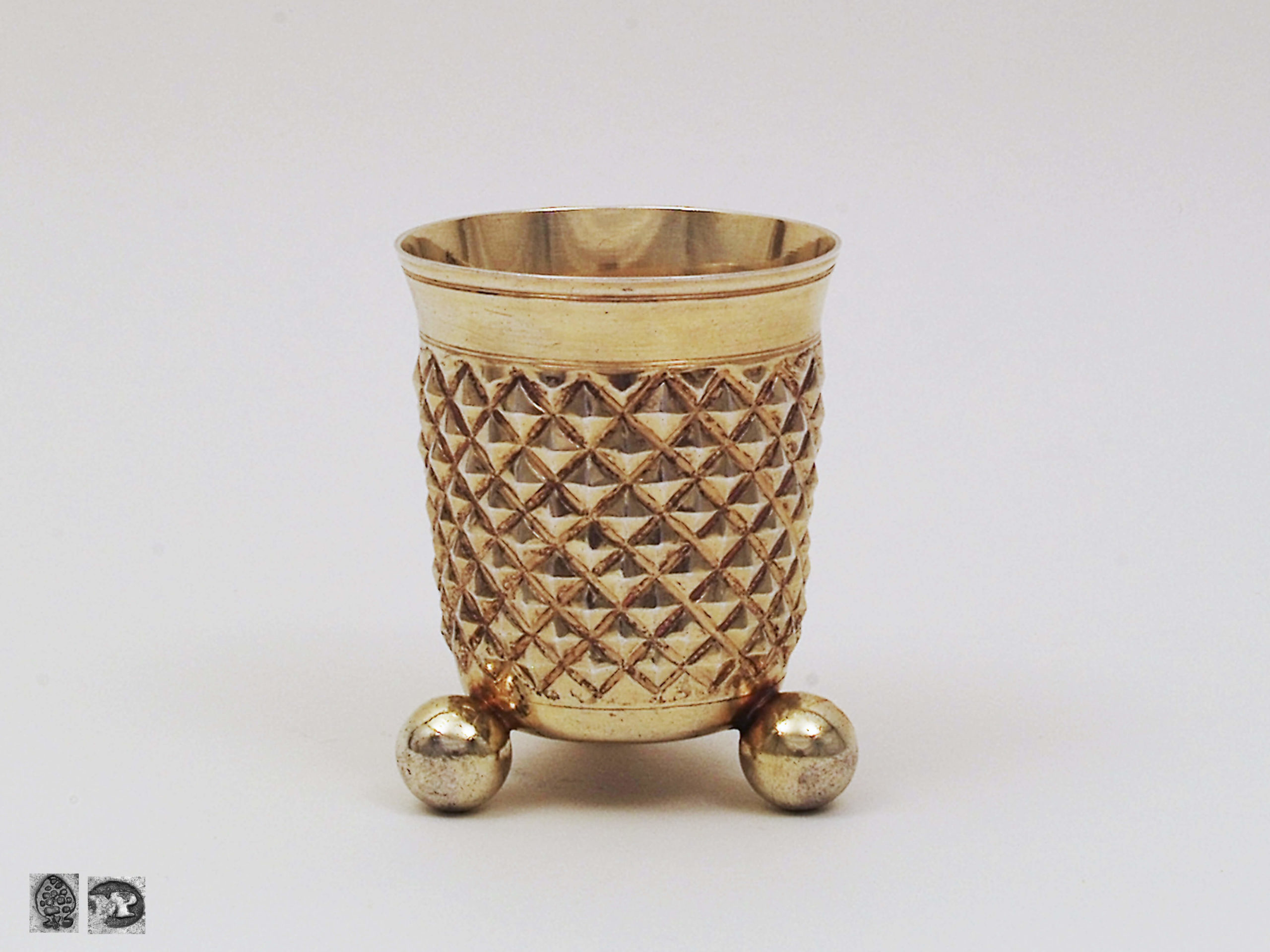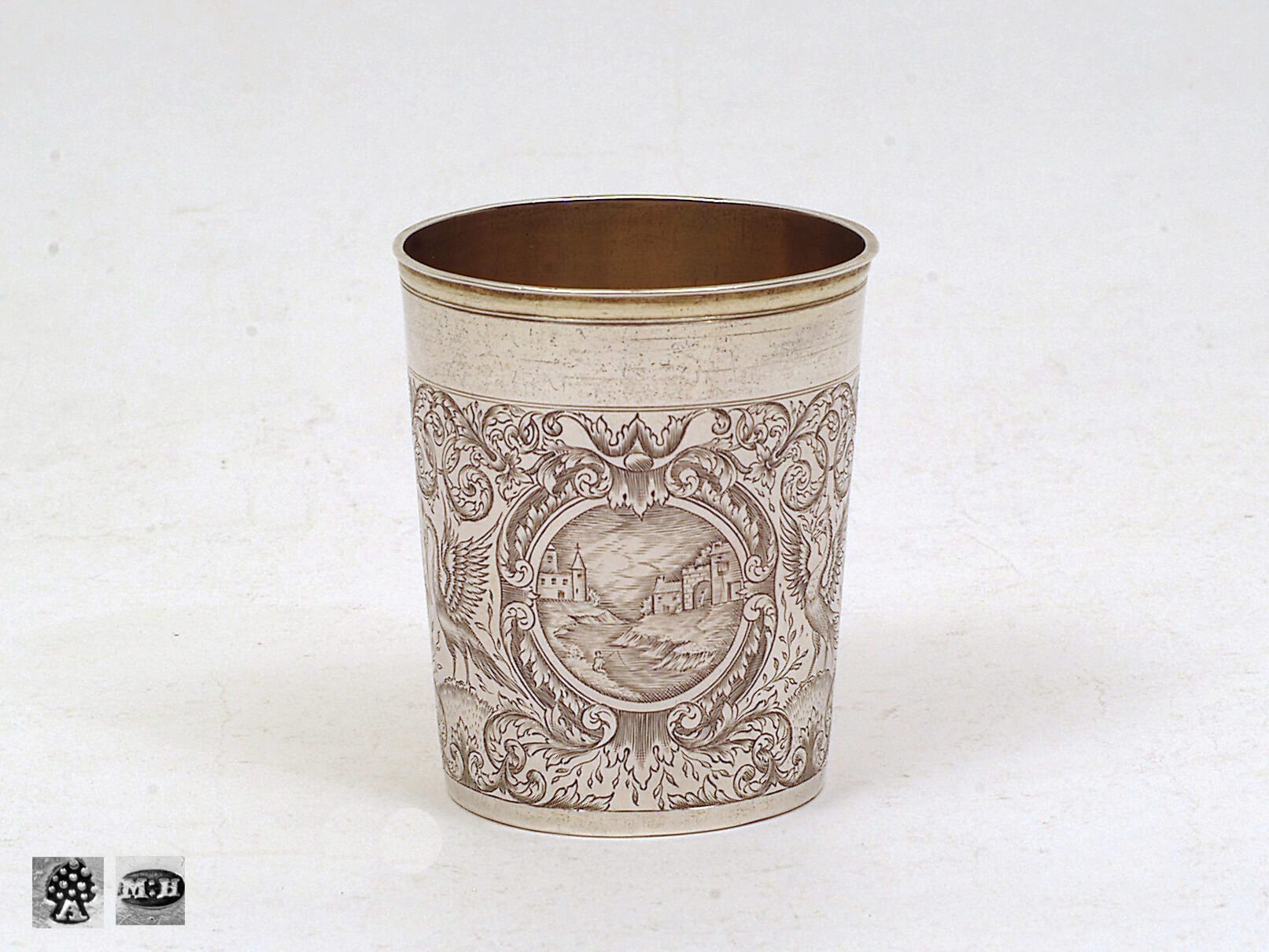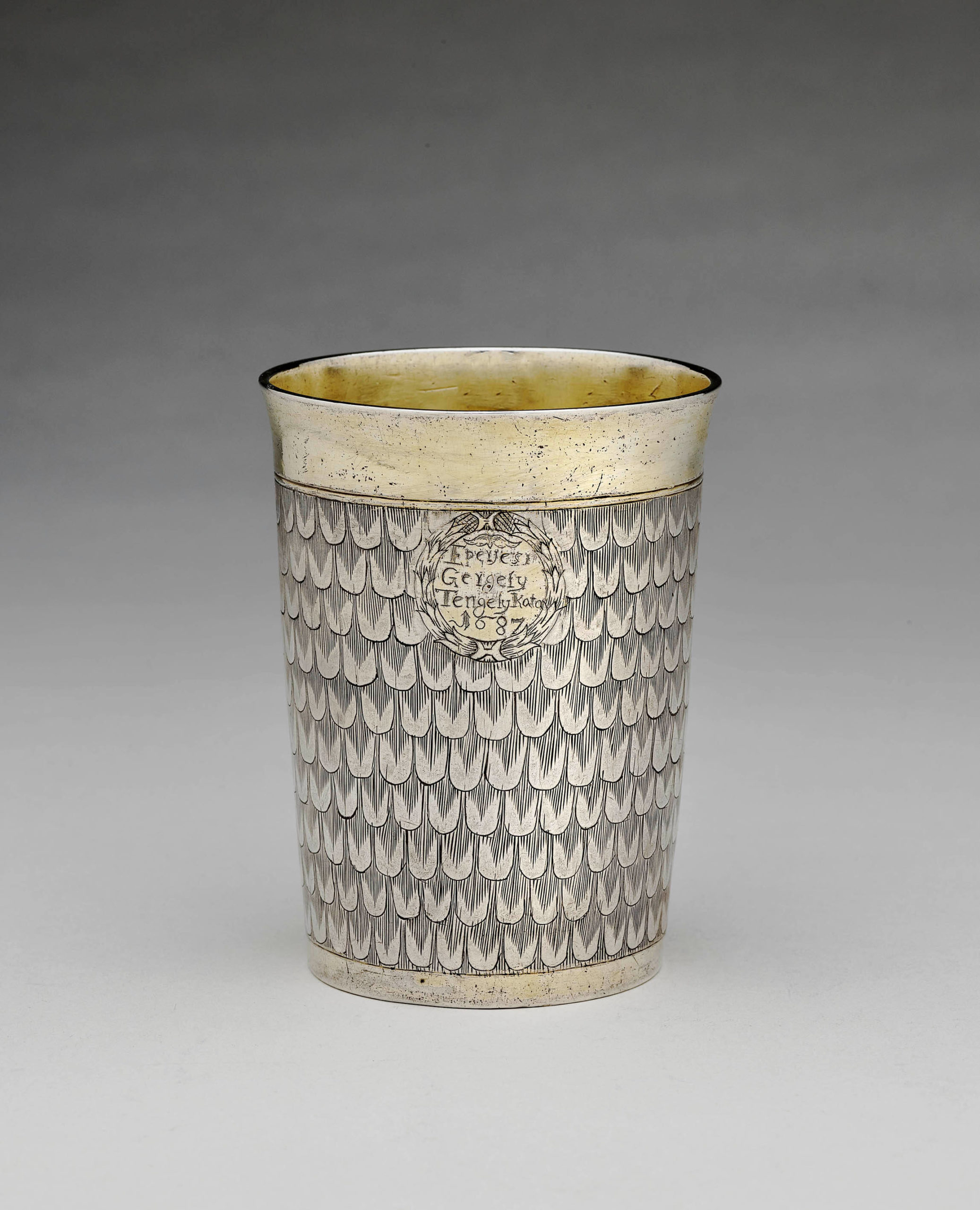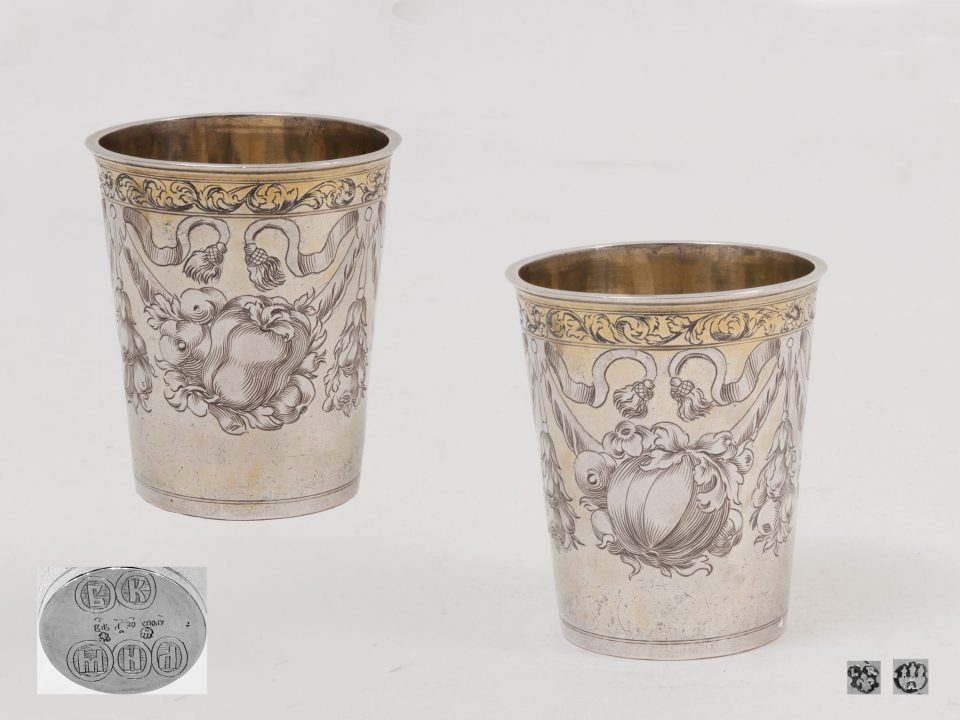SILVER CUPS AND GOBLETS
Drinking vessels made of silver, like wine cups have always been designed with fantasy in mind, craftsmanship and the joys of decoration and aesthetics. Decorated with rich embossed work, engravings, enamels, precious stones and with sayings. Luxurious silver cups are known since Antiquity, they are important not only because of their value, but also because of their social, cultural and historical significance.
LUXURY IN SILVER
Luxury has always been important for public and private life. In the sixteenth and seventeenth centuries, luxury within silver was particularly important, due to the increasing import of precious metals from South America. Thus, the royal courts were able to multiply their commands of magnificent works is silver. The larger formatted silver objects were essentially show-pieces: such silver objects were placed into large decorative cabinets. During a festive or official banquet, silver objects were removed from there in order to be placed, temporarily, on the table and used. Whilst silver cups, cups and plates held a central place.
FEAST CUSTOMS, WINE CUPS AND SILVER
The festive meal and the ceremonial drink were particularly significant to the ceremonial feast customs. Throughout the public (city, guild) as well as in the private (aristocratic or patrician) sphere, the guest would have been greeted with a drink during such occasions, and thereby the so-called “Willkomm” drinking cup was often used. Wine beakers made of silver and numerous Nuremberg and Augsburg cups are witnesses of many happy and also solemn events and therefore many of them are unique silver objects created and acquired for special occasions.
The drinks are also closely related to the drinking vessels. The wine, which has been cultivated since antiquity, stands in the foreground, followed by beer, a drink originally typical of the Germanic countries. Later, warm drinks such as tea, coffee and chocolate were added in Europe.
In addition, drinking vessels were regarded as a first-class gift, which led to an increasing demand for sumptuous and beautifully decorated cups and beakers. In this sense, typical gifts could also be the silver christening beakers.
AUGSBURG AND NUREMBERG SILVER BEAKERS
Nuremberg and Augsburg have been centres of German goldsmithing in southern Germany since the Middle Ages. Whilst also, in England, France and various other European lands silver beakers along with silver cups of different shapes, became typical for every land of origin.
In the fifteenth and sixteenth centuries, secular drinking beakers still had restrained forms and often simple, decorative motifs (mostly on the friezes below the rim and at the foot). A typical Renaissance ornament is the Moresque design, which is influenced by Islamic ornamentation. In the late Renaissance, the influences of Flemish and Dutch handcraft design were added to the ornamentation vocabulary of silver products coming from these two German towns (e.g. scrollwork). In the seventeenth century, the so-called auricular style developed (masks with grotesque facial features).
After the Thirty Years’ War (1618-48) decorative elements such as plants and flowers were created. These can be found both as engravings and as driven ornaments on silver cups. At the same time, silver cups and beakers with engraved landscapes are also prevalent in Nuremberg and Augsburg.
The eighteenth century brought strong influences from France (e.g. the Régence and Rococo styles as well as Neo-Classicism in the second half of the century). During this period, there was the novel requirement that drinking vessels as well as other parts of silver and tableware (e.g. terrines, plates and platter) should be uniformly shaped and decorated to match the other parts of a service.
SPECIAL FORMS IN SILVER BEAKERS
In addition to the usual beaker shapes, such as the slightly conical or straight cuppa of the body or even the tulip form beaker, special silver forms are also available. One of these forms is, for example, the wine goblet, known also as a Roemer. Roemers are goblets that were produced especially in the late sixteenth and seventeenth centuries, and are wine beakers made of both silver and glass.
Another special type is the so-called Häufebecher (also Satzbecher in German), known as the stacking beaker. These are relatively low silver cups with a round foot (occasionally vaulted), which is connected to the cuppa with a low shaft and a profiled rim. They are conceived as a set of six or twelve and can be put into each other. This beaker form was most frequently used in Nuremberg and Switzerland.
In the second half of the seventeenth century, a smaller, round silver beaker, the so-called tumbler, appeared. Originally, this cup had such a base, whereby it was not possible to let it stand up independently from a certain angle of inclination. Later, a flat bottom was created, which allowed it to stand on a table.
SILVER CUPS FROM AUGSBURG AND NUREMBERG
Silver cups, as drinking vessels, consist of foot, shaft and cuppa and have a representative or ceremonial function. These can be small cups or larger, more imposing objects. A silver double cup is composed of two of them and has interlocked lip rims.
At the beginning of the fifteenth century, German cups had a relatively simple shape with a domed bottom and were often tall and slender. In the second half of the sixteenth and beginning of the seventeenth century, the cuppa part appeared in various forms and was richly decorated with engravings, embossed parts or etchings. In general, silver cups are characteristic of the sixteenth and seventeenth centuries.
Since the fourteenth century, cups with a silver mounting and natural materials – such as ostrich egg, coconut and shell (for turbo and nautilus cups) gradually increased in popularity. In Germany, shell cups were produced relatively frequently, along with silver variants, shell-shaped cuppas became noticed within the products of Augsburg silver.
Since the sixteenth century, silver ships (anef) were, in the German cultural area, also known as decorative objects. Ships as well as table fountains, automata and drinking games (“Trinkspiel”) were a status symbol for their owners, in addition to this, were an exceptional and rare piece, which served for lively discussions and entertainment.
A quite special kind of decoration appears in several time periods. The decoration of silver cups and beakers with coins or medals was widespread in the Renaissance. Such coins were mostly commonly embedded in the silver corpus, and we can also find this technique in Northern Germany and Scandinavia during the seventeenth and eighteenth century.
Summarizing, antique silver beakers and cups are decorated with fine engravings, landscapes and careful embossing, displaying the artistic possibilities of the various techniques used. The decorated fields reflect as always, the thematic preferences of clients and buyers: depictions from ancient mythology, landscapes, virtues, hunting scenes, and other themes.
The art dealer Helga Matzke gives antique silver beakers and cups a very central place in the category “Collectors’ Items”. We always try to acquire beautiful antique, silver beakers and cups and to understand and communicate their speciality art-historically and aesthetically. If you have any questions regarding our antique silver beakers and cups, please feel free to contact us at any time. We look forward to the creative exchange of ideas with you!



